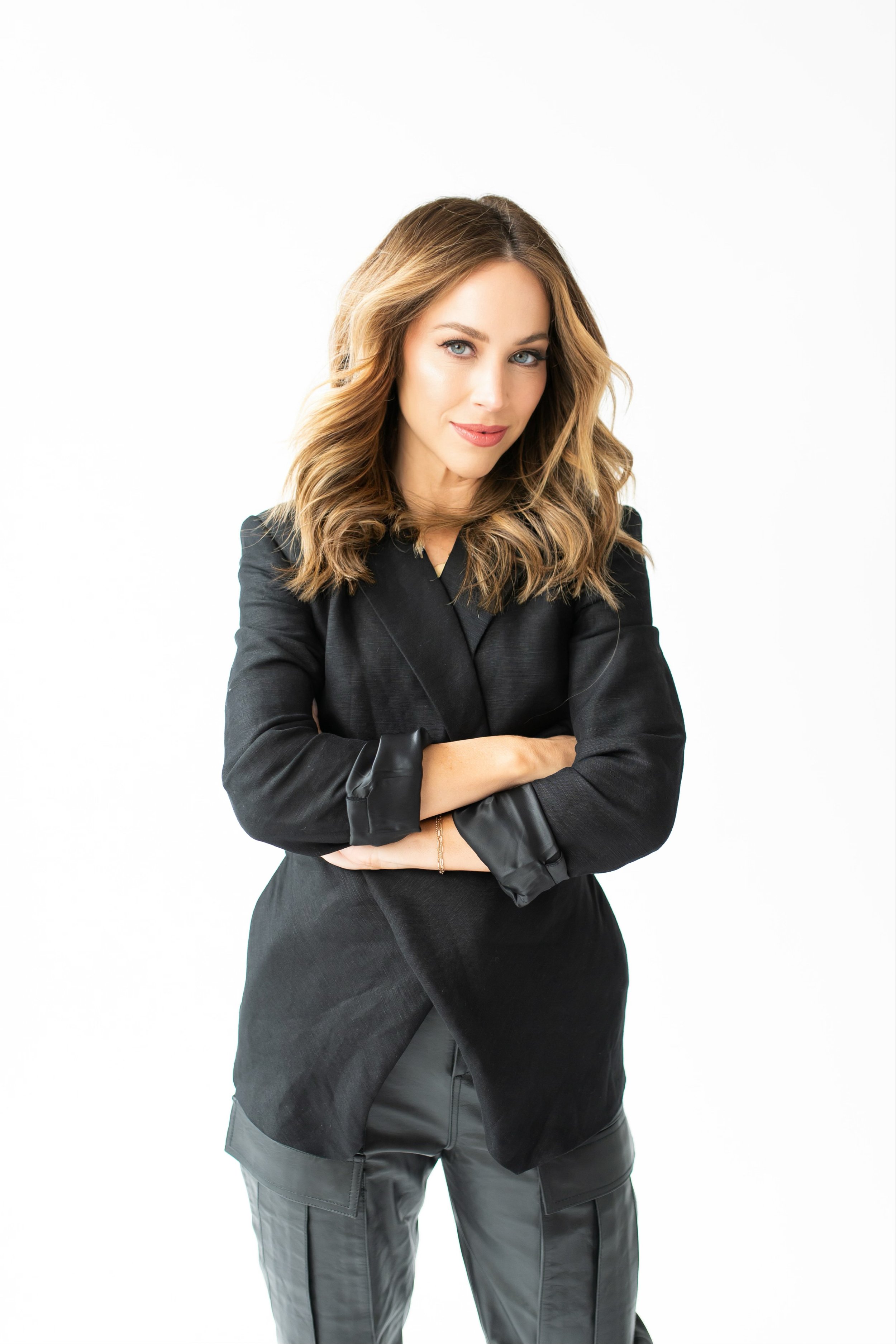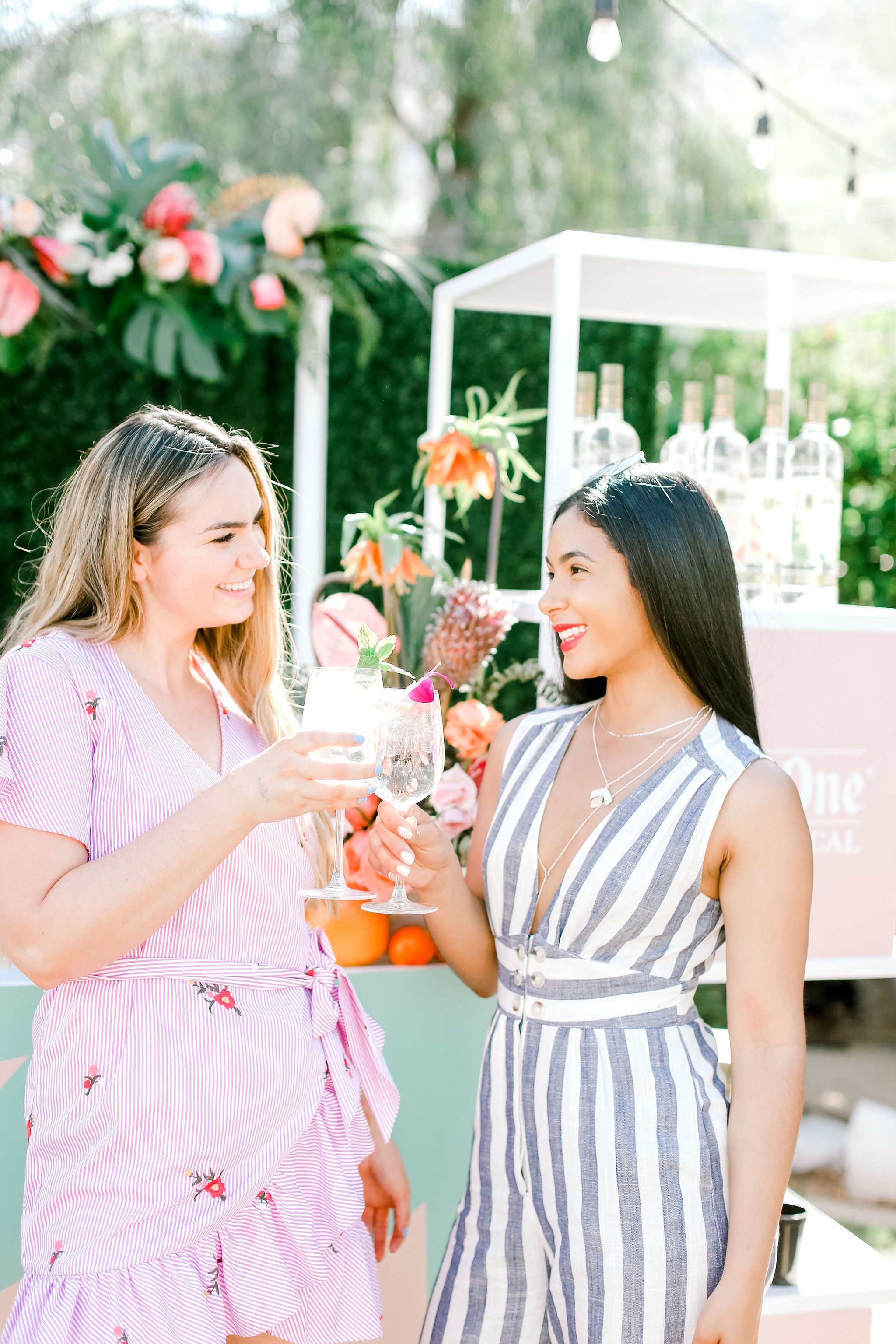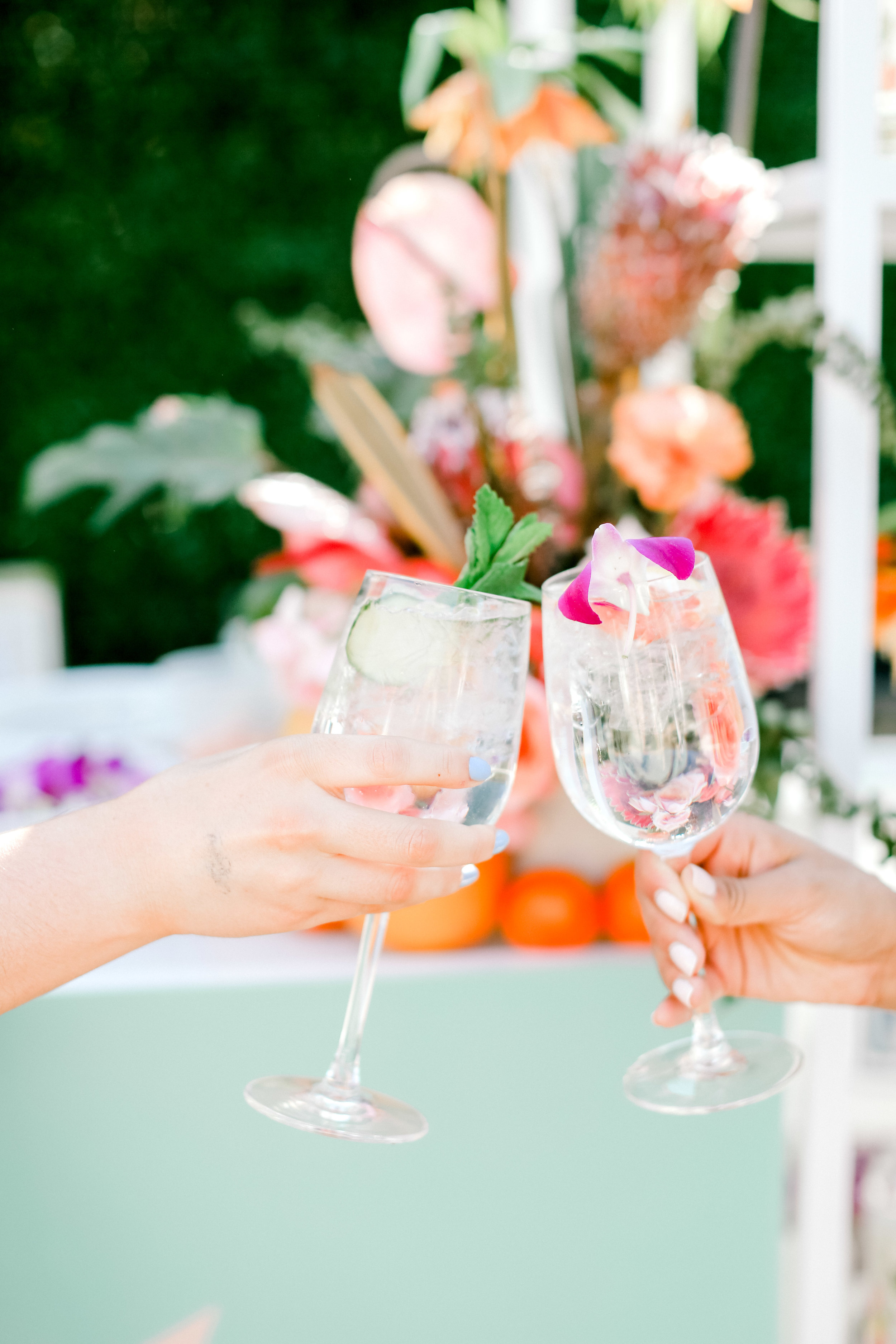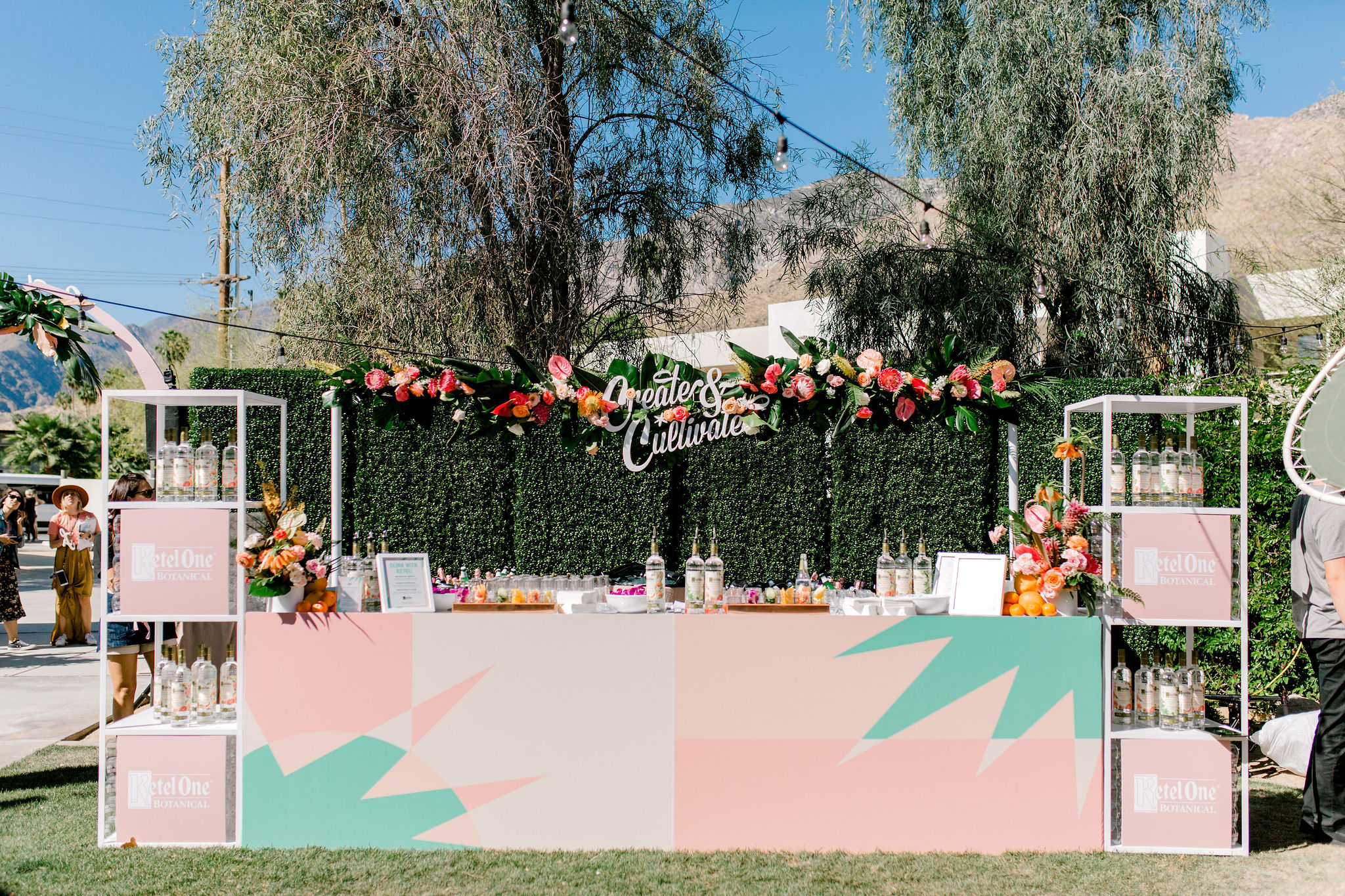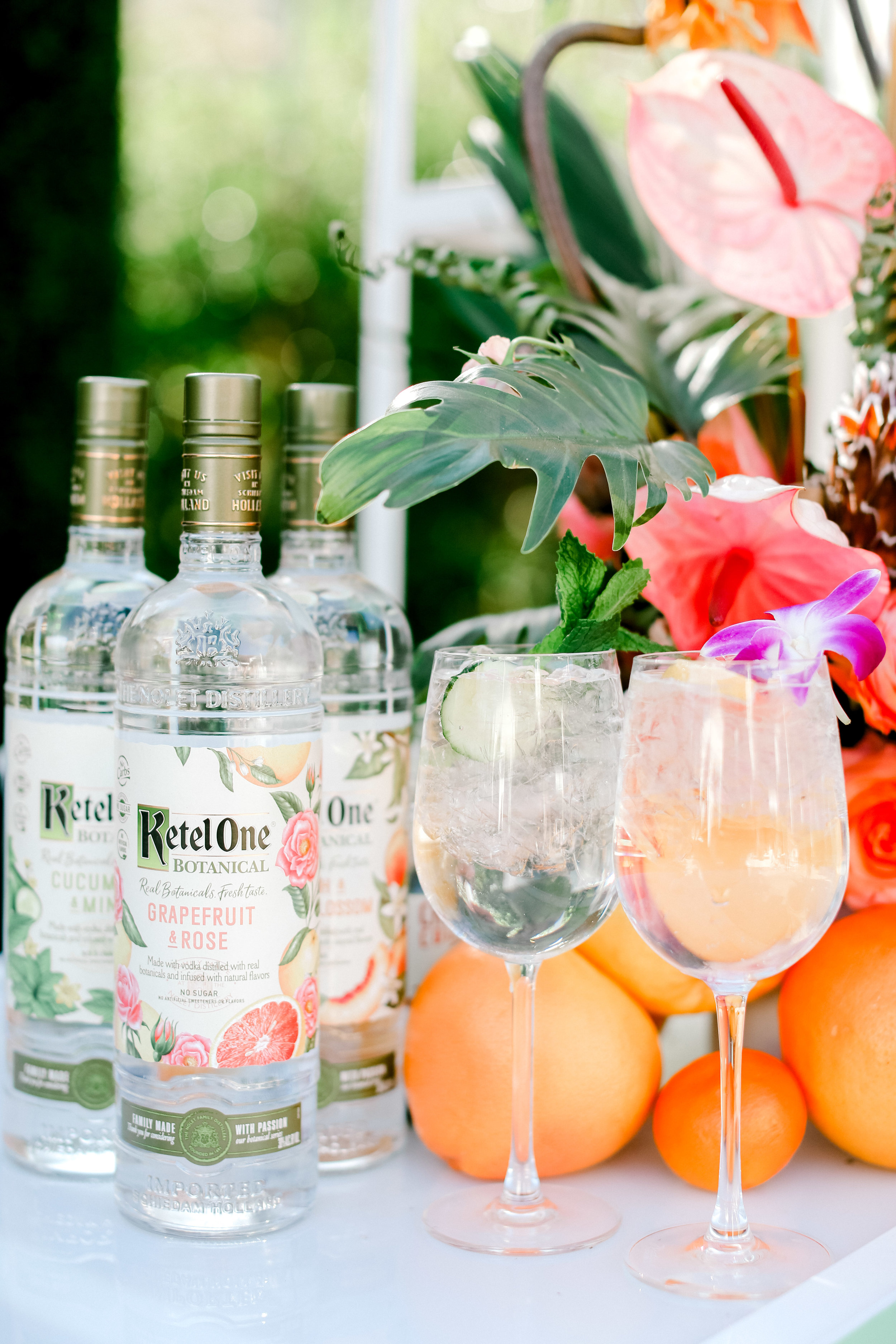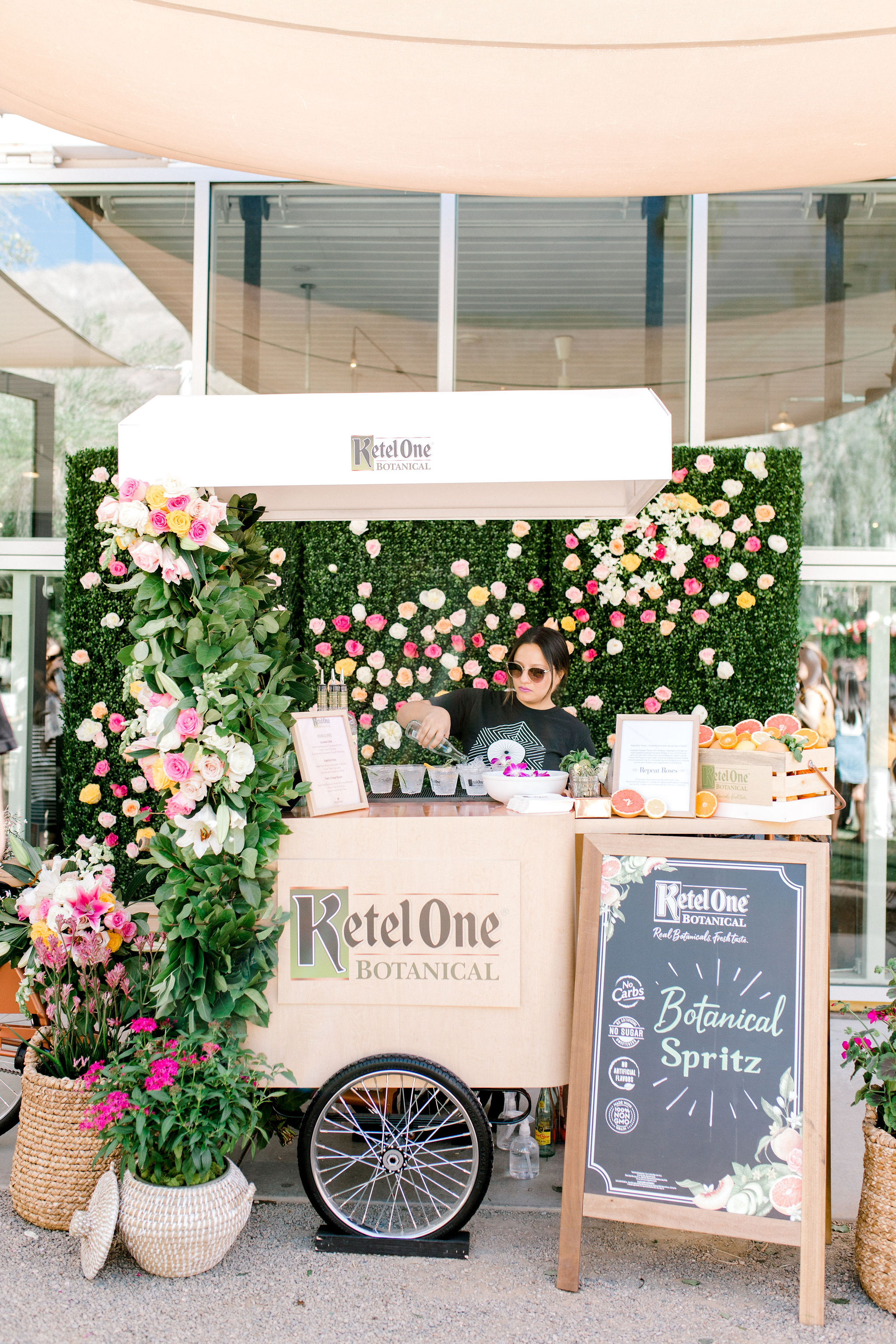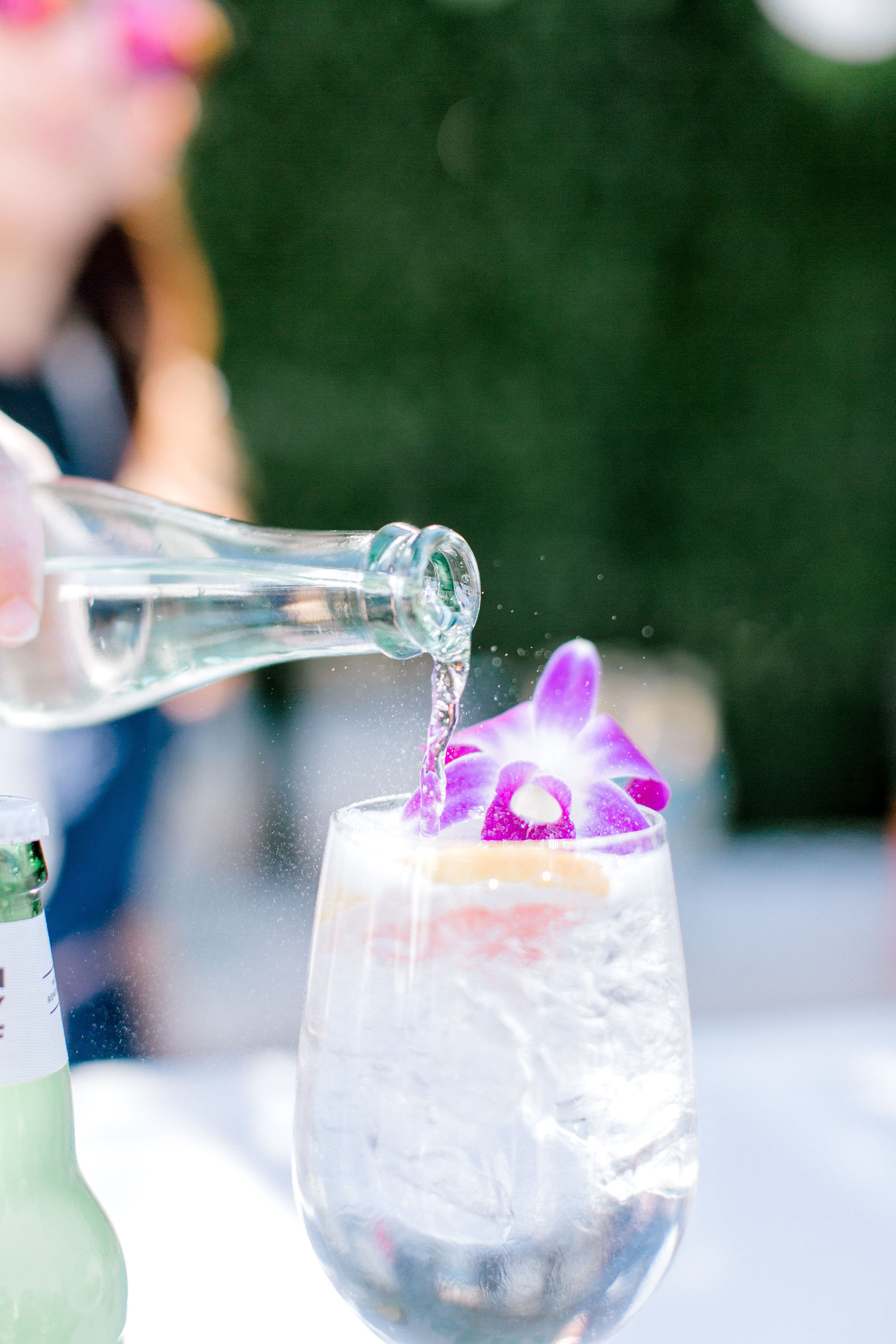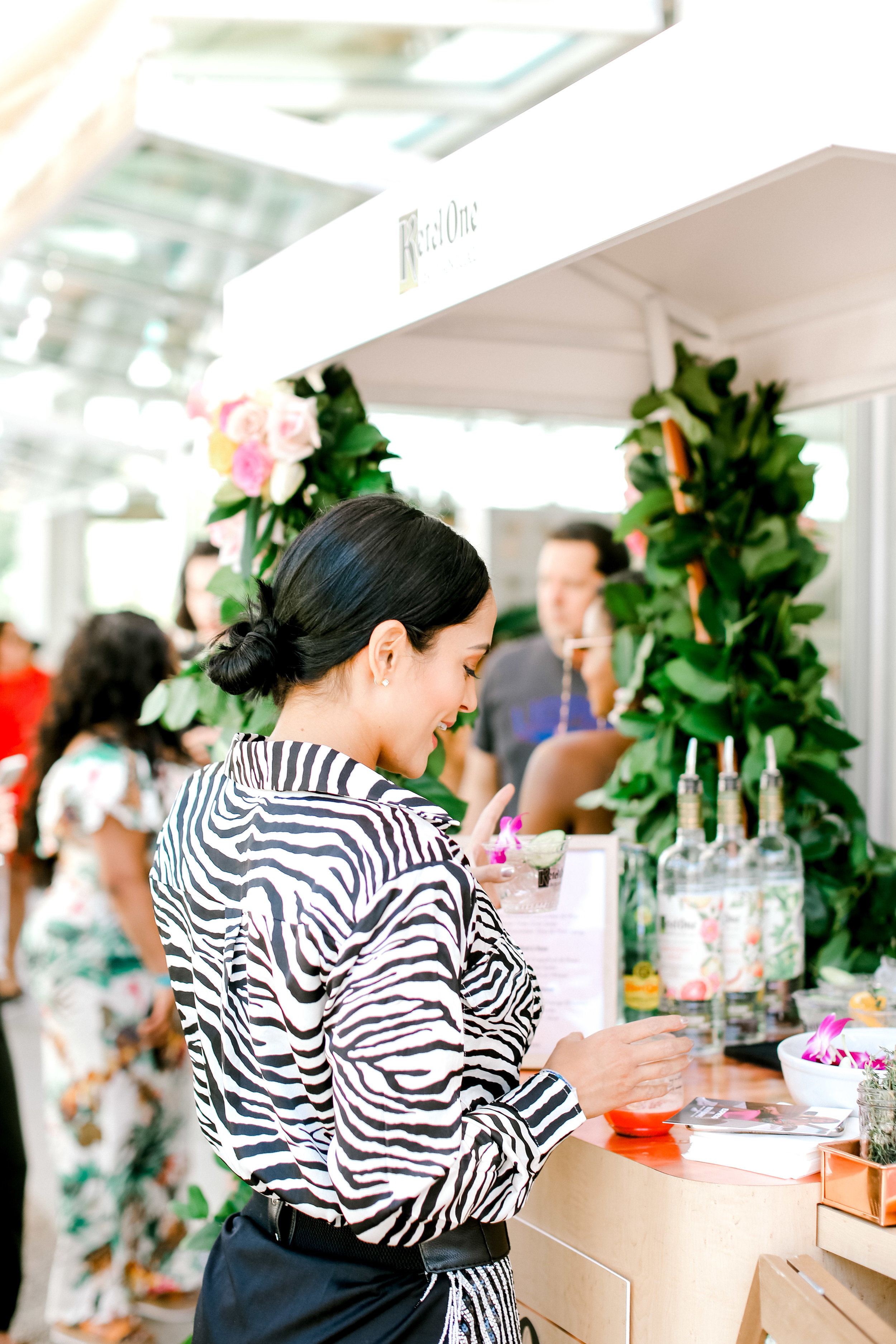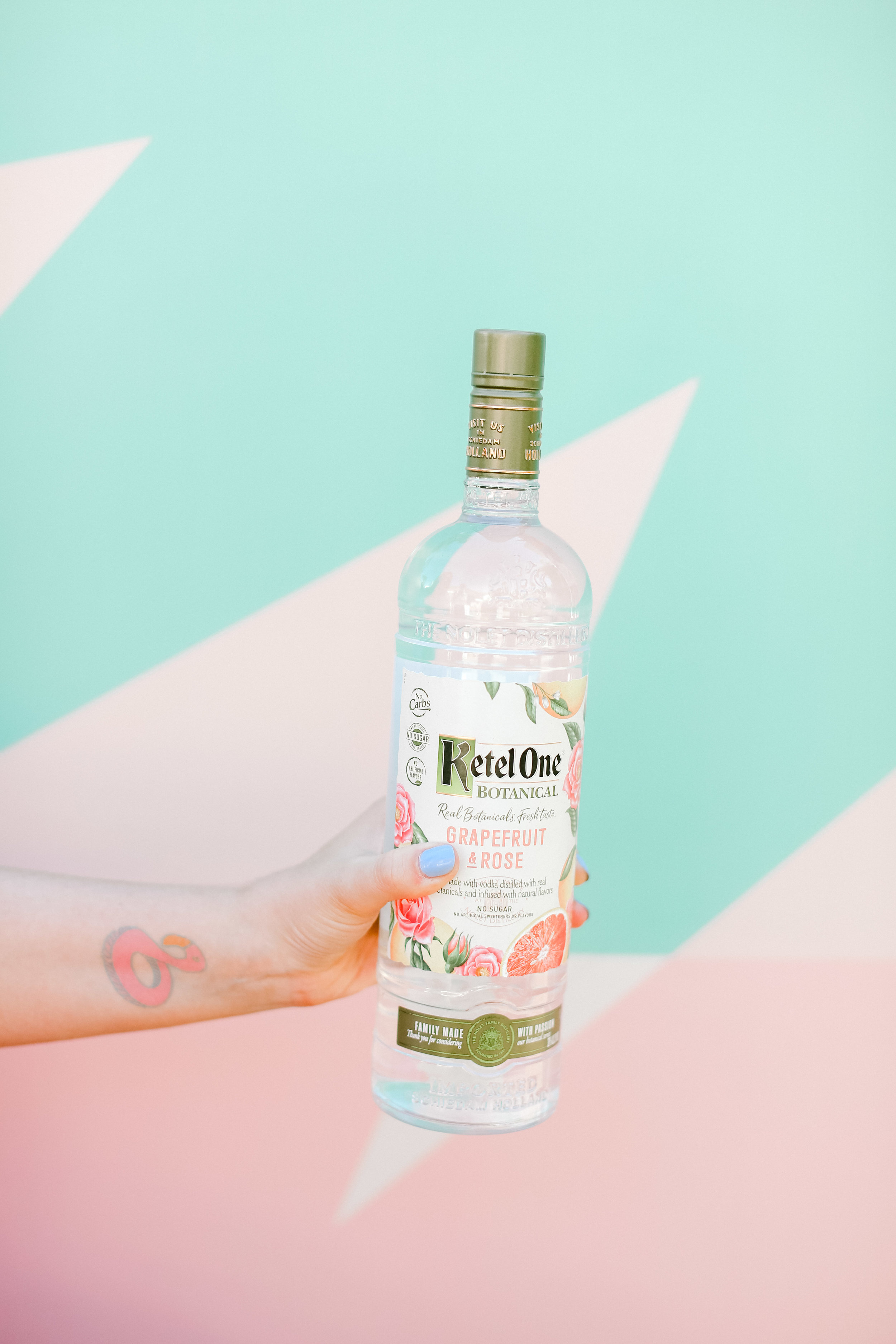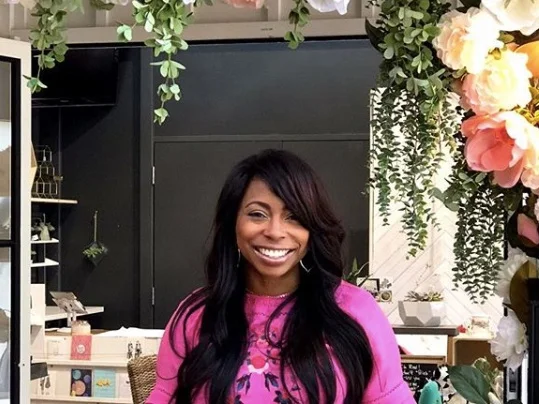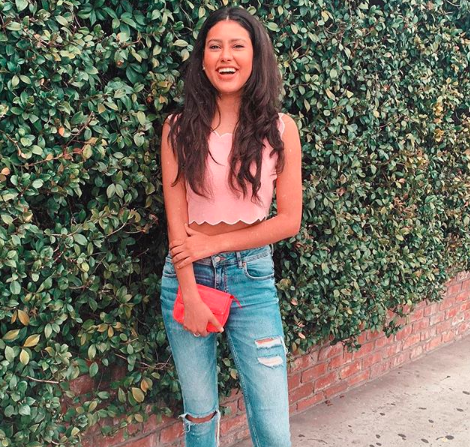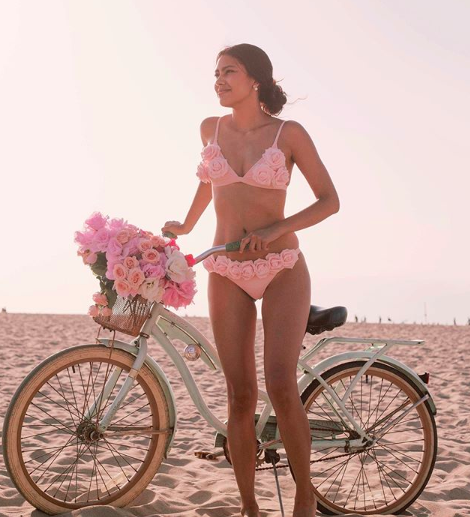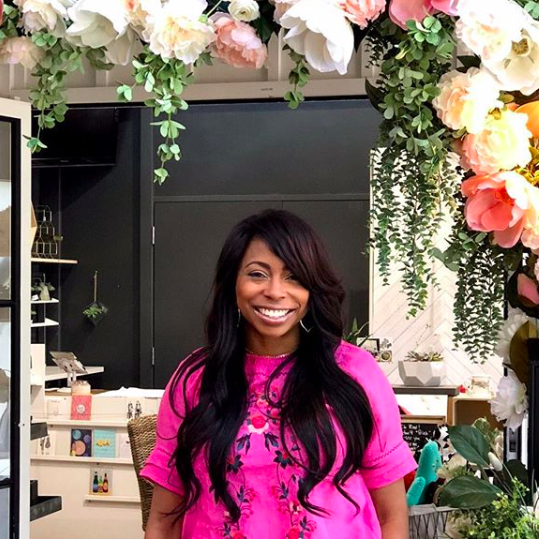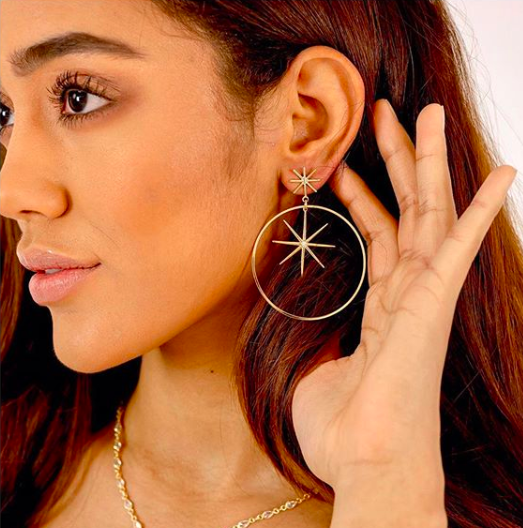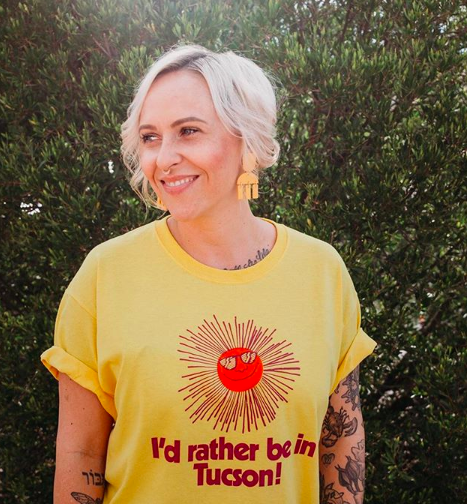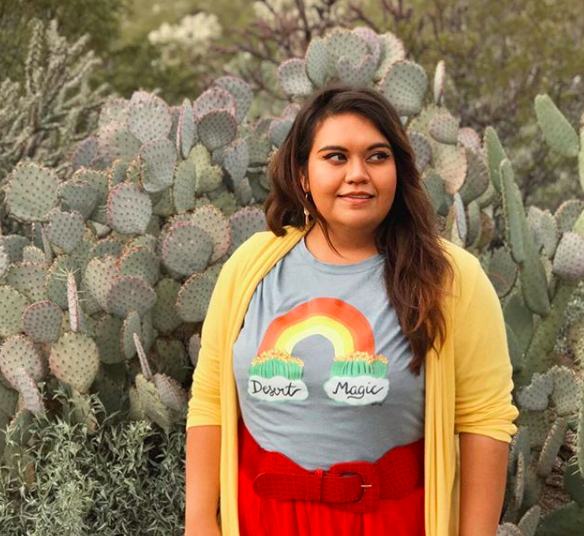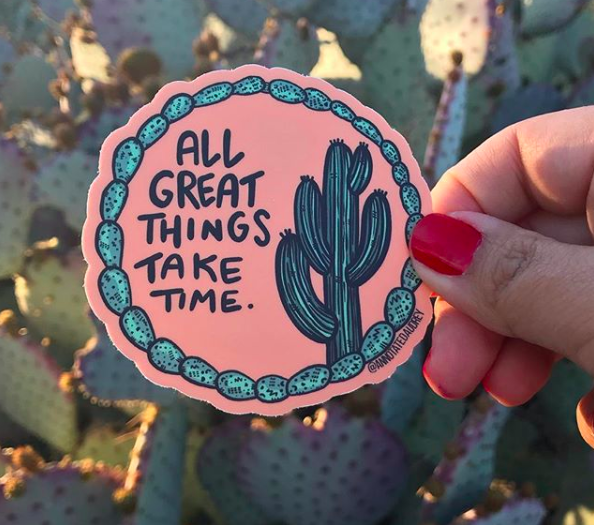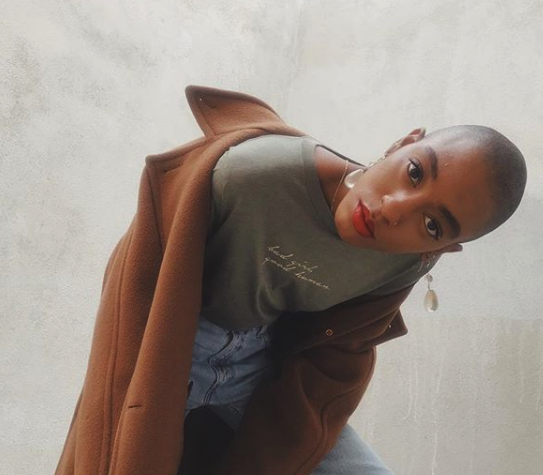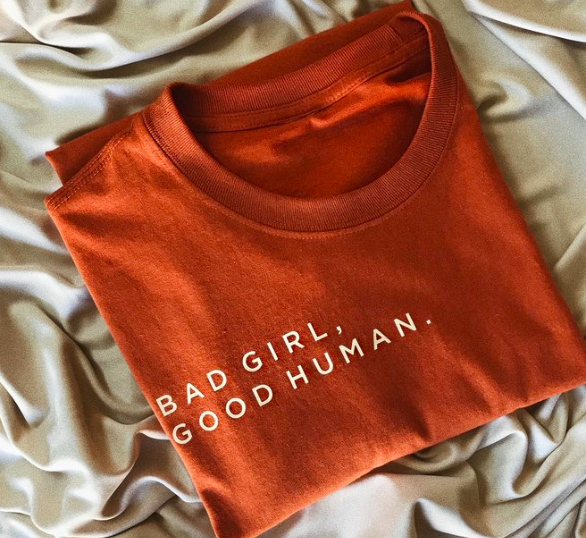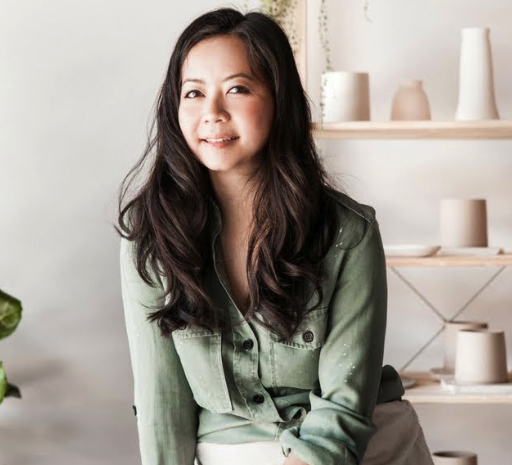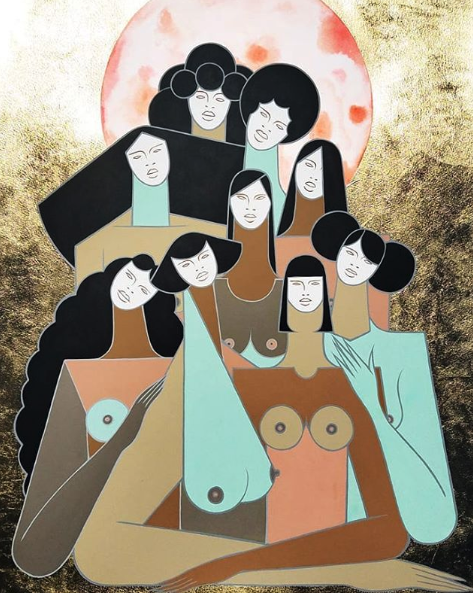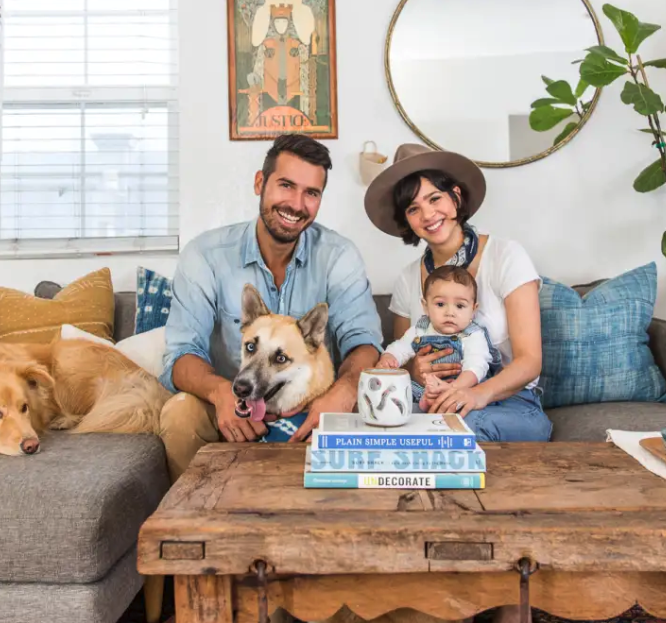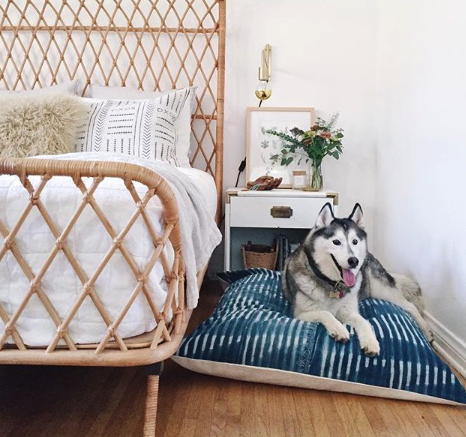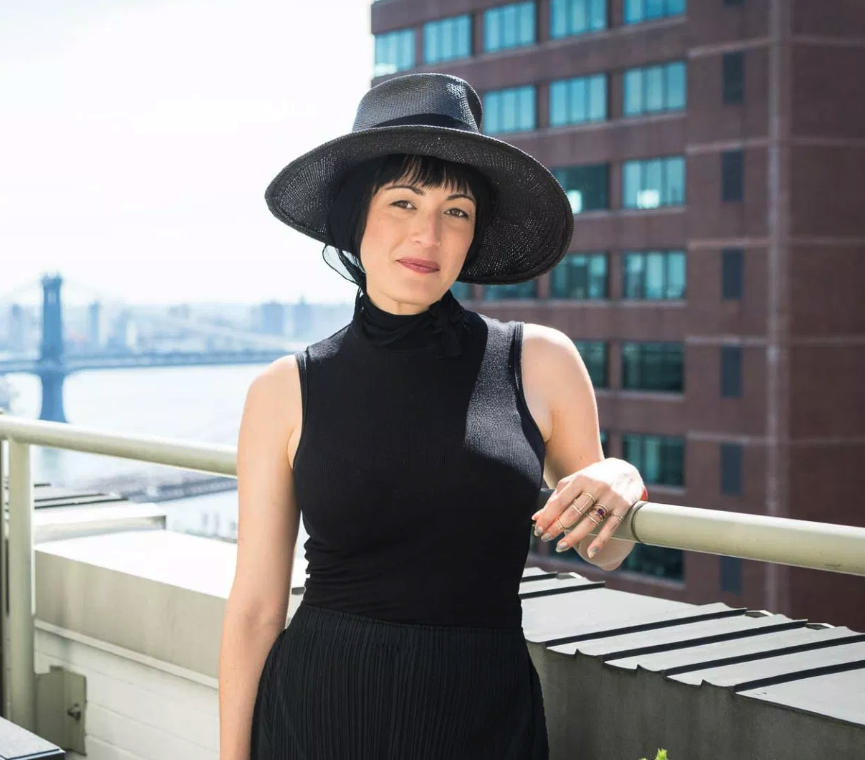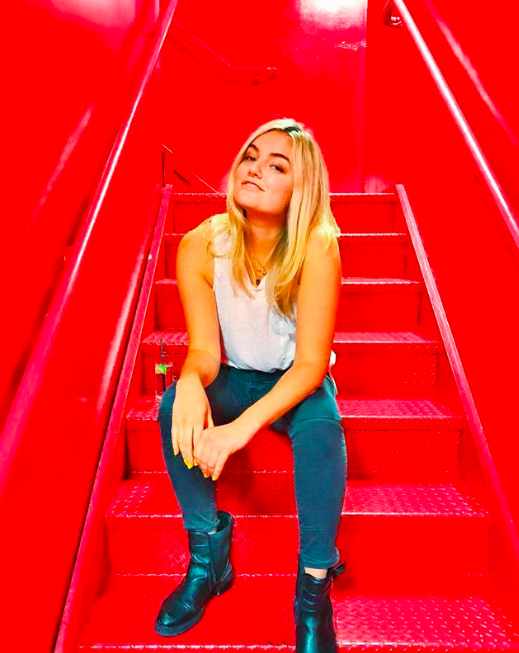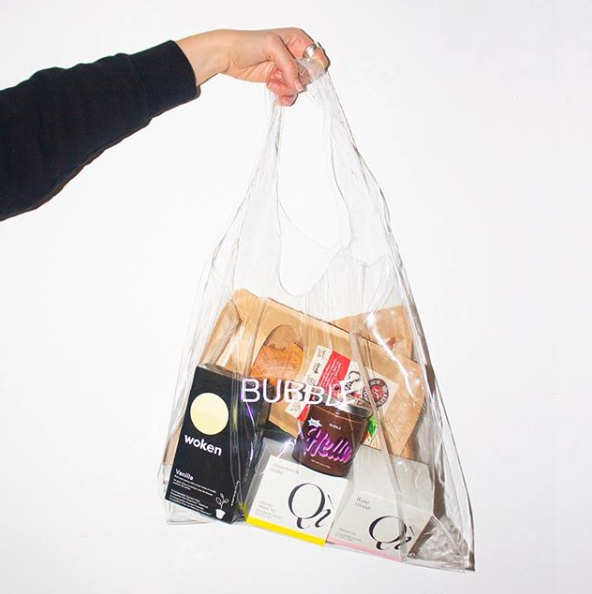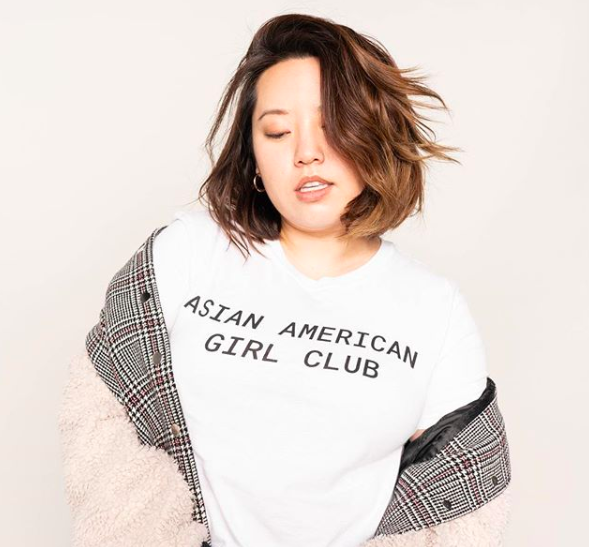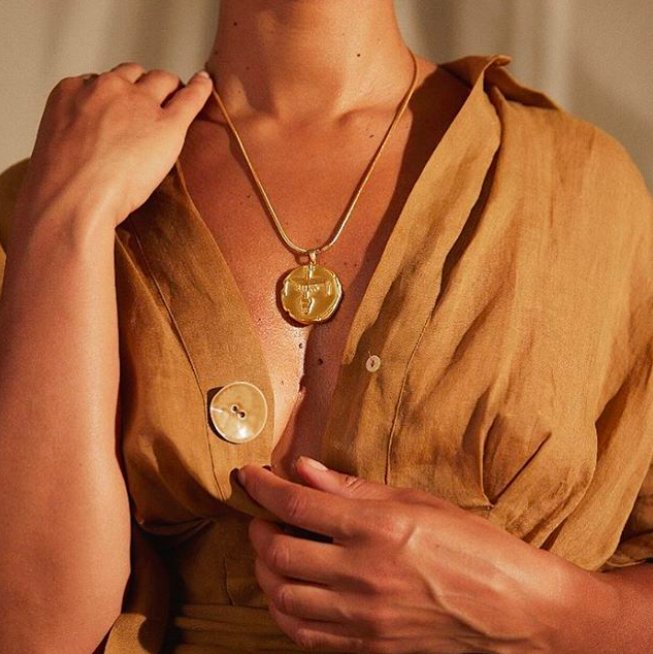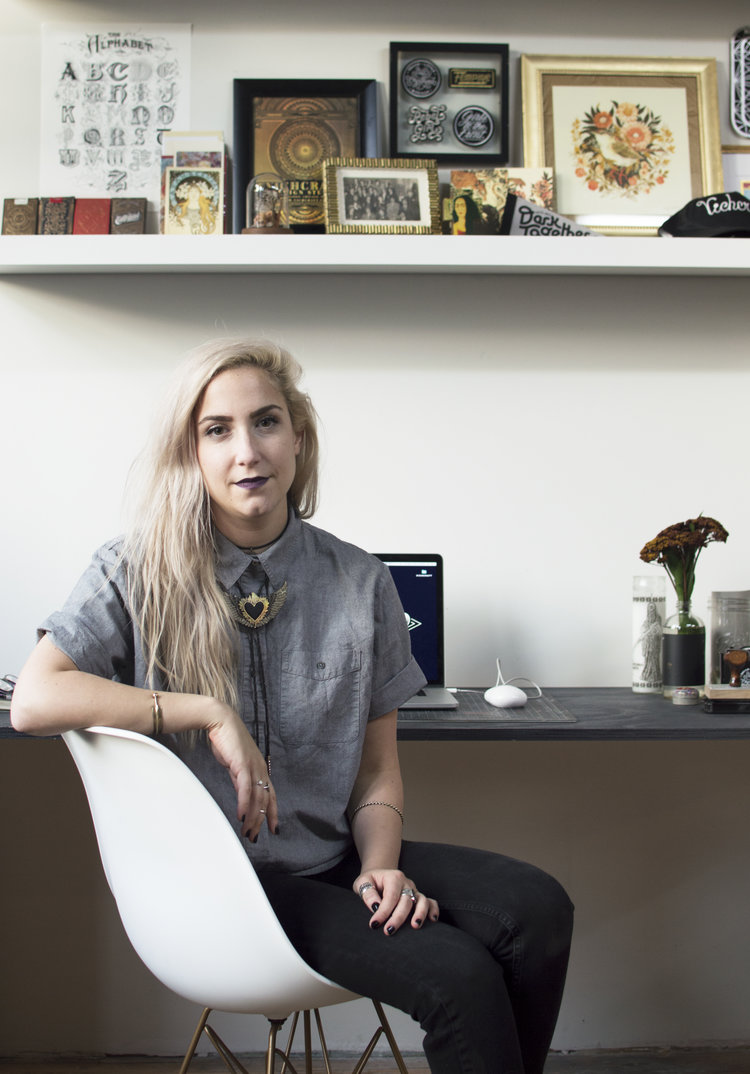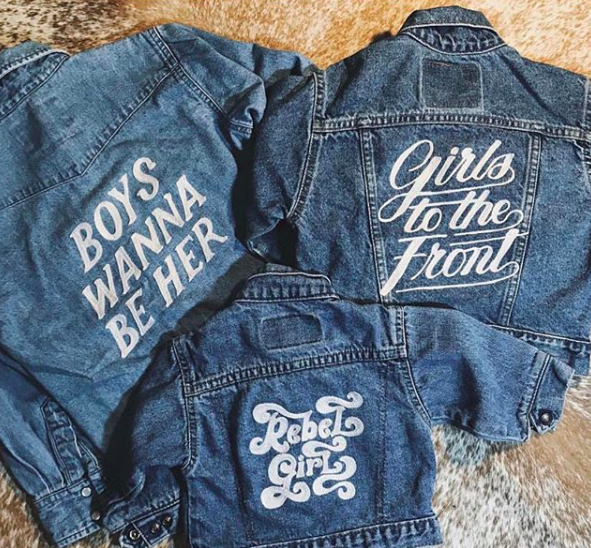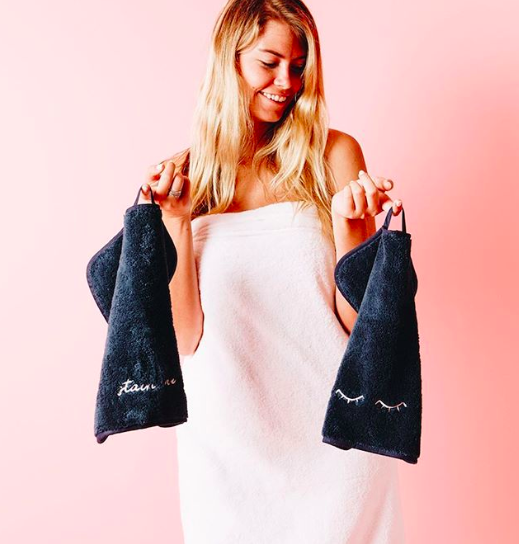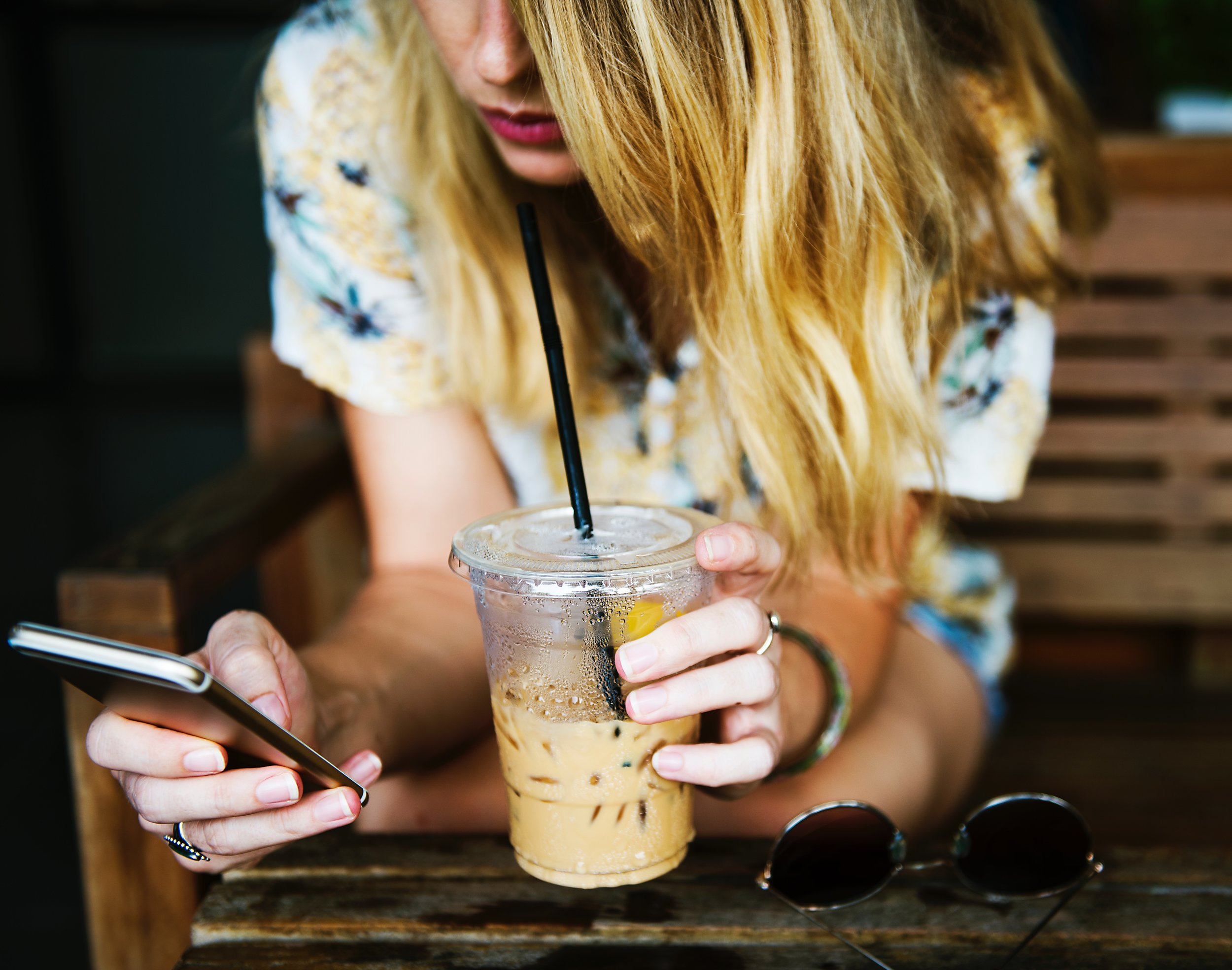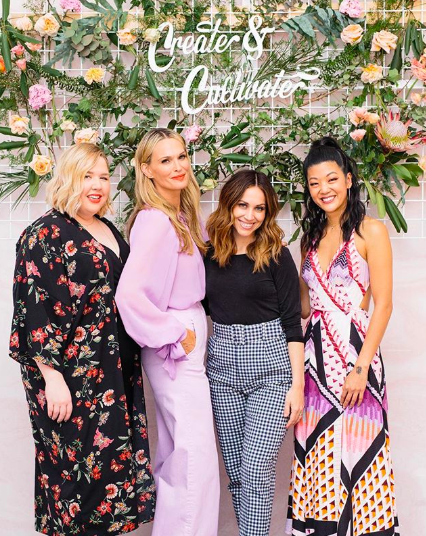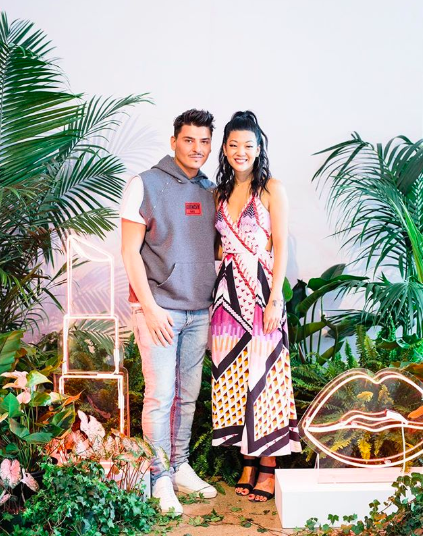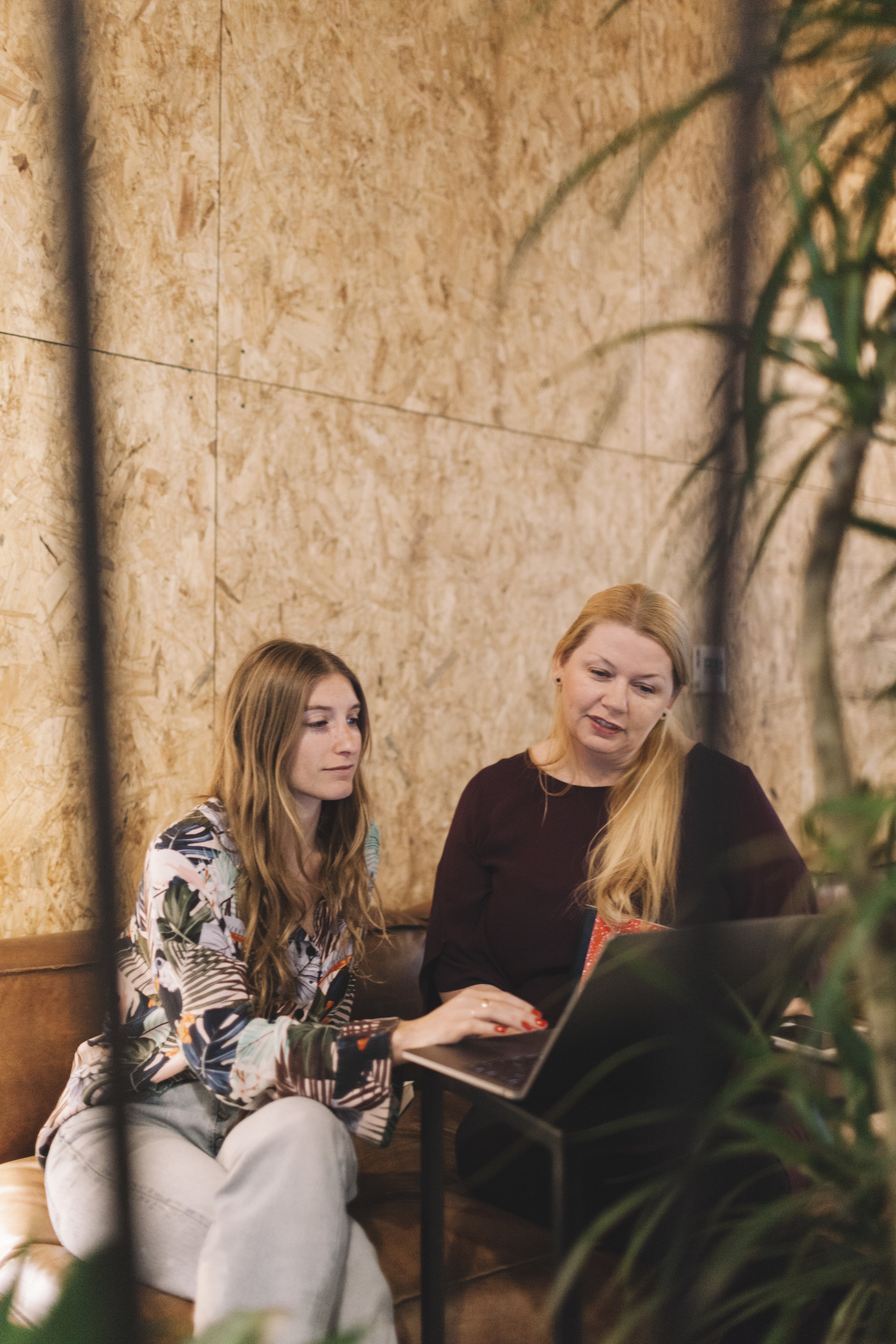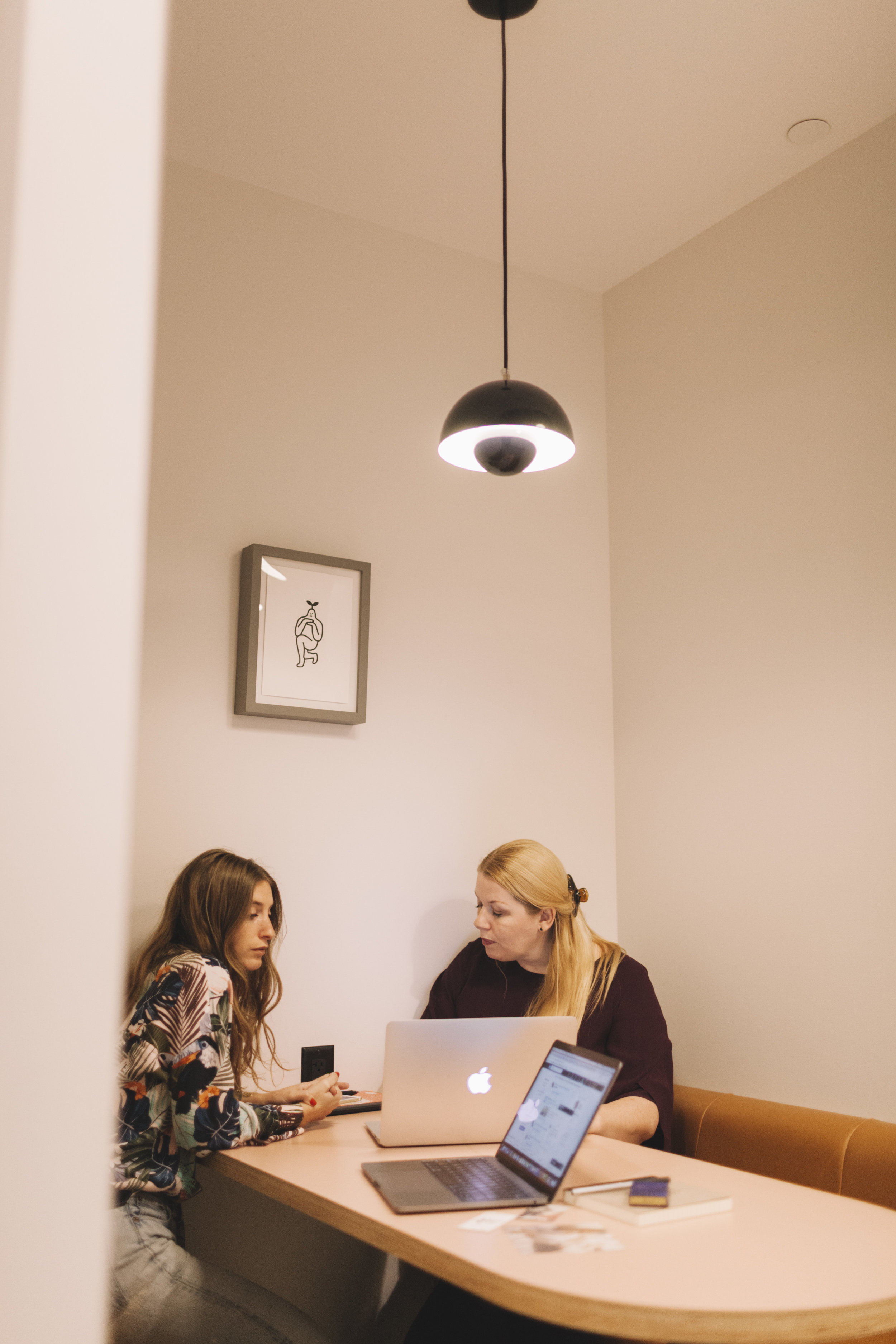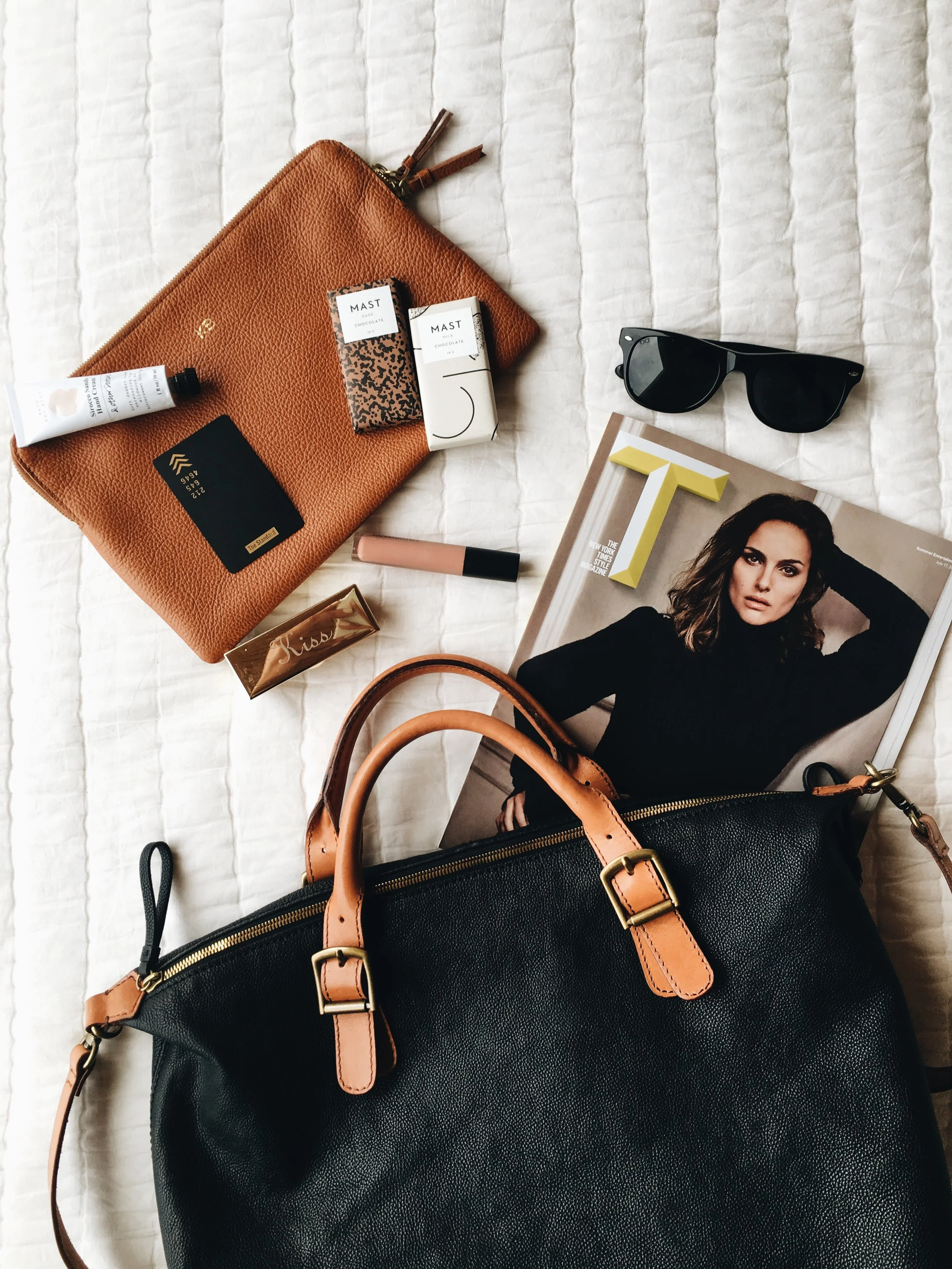Female-Led Women's Health Apps Are Leading the Way in Data Privacy
This June marks the one year anniversary of the landmark Dobbs v. Jackson Women’s Health Organization decision that overturned Roe v. Wade, effectively ending a woman’s constitutional right to abortion in the United States. In its aftermath, a resounding alarm echoed throughout the tech world and among health app users over data privacy and protection. The growing concern is that prosecutors in states with abortion bans (now 14 states) could subpoena data, such as location, search history, and personal health information, to criminalize individuals in abortion-related cases.
The allure of logging health details into an app is simple: ease, function, the ability to take control of your health, and informative feedback/insights at the touch of your fingertips. But unlike traditional medical records, the Health Insurance Portability and Accountability Act (HIPAA) does not protect this data as it is intended for personal use. With no federal legislation in place, it’s up to tech companies themselves (or individual states) to ensure data privacy and protection for consumers.
Ever since the Supreme Court draft decision was leaked in May of 2022, women’s health apps, namely period-tracking apps, have been catapulted to the forefront of debate over ethics, data privacy, and protection. Thousands on Twitter called for the deletion of period-tracking apps altogether. The explosive divide and demand for change highlighted a growing mistrust among users and tech companies.
To fully grasp the gravity of the implications is to understand how many women nationwide rely on these programs. Nearly a third of women in the United States have used a period-tracking app, according to a 2019 survey from the Kaiser Family Foundation. One of the most popular apps alone, Flo, has over 240 million downloads and 50 million active users per month.
Users have increasingly relied on health apps and consented to inputting personal data, but it wasn't until the fallout of Roe v. Wade, that people truly understood the downstream impact of tech without data privacy at the forefront. If they weren't aware before, they certainly are now.
“People are paying attention to the broken systems around our data and how it’s protected,” says Tazin Khan, longtime cyber security specialist and founder of Cyber Collective, a community driven research organization educating individuals on technology, security, and privacy online. “It has ignited the advocates, the ethicists, and the people that care to be fast and move hard to make sure that protection is in place.”
Khan describes data privacy and data protection as two-fold: “Privacy regulation is essentially around the compliance of businesses and how they are maintaining data and hygiene and the way that they’re collecting, storing, and redistributing data,” she says. “It is not about consumer data protection. Consumer data protection is very different, right? Do I have the right to delete? Do I have the right to access my data? Do I have the right to opt out of being opted into something?”
While the overturn of Roe v. Wade has certainly highlighted significant needs for improvement in both categories, it has also brought attention to what some companies are doing right.
Female-led women's health apps putting data privacy first
For Berlin-based period-and-ovulation tracking app Clue, data privacy was always a part of the company’s ethos. Founded and led by women, the Berlin-based app is protected by the European Union’s General Data Protection Regulation (GDPR), one of the strictest data privacy and protection laws in the world. While it covers various aspects of data protection, including websites, it also includes provisions that protect personal data privacy on apps, from consent requirements, to transparency, to user rights, data security, and more.
In light of growing concerns from American users, the app’s co-CEOs, Carrie Walter and Audrey Tsang, released a statement to its community of 11 million active users stating that private health data will never be shared, including to authorities. “Your personally identifiable health data regarding pregnancies, pregnancy loss or abortion, is kept private and safe. We don’t sell it, we don’t share it for anyone else’s use, we won’t disclose it,” says the release. The GDPR establishes protections over personal data and holds organizations accountable with severe penalties for breaching these protections with fines up to tens of millions of euros.
With the advent of the Dobbs decision, privacy advocates and legislators have been working to impose similar federal protections in the U.S. On the state level, select states have introduced comprehensive data privacy laws, such as the California Consumer Privacy Act (CCPA), which grants users more control over the personal data that businesses can collect. Several tech companies in the U.S. have amended their data privacy and protections, largely in response to the demand of consumers, and users have been receptive to these changes.
Also governed by the GDPR is Natural Cycles, the first FDA-cleared birth control app in the U.S., which measures fertility through body temperature. The company is headquartered in Sweden with operations in the United States, Germany, Switzerland, and the UK. Unlike other apps on the market, the company has integrated a subscription-based model, so selling data to third parties was never a part of their revenue stream. (For many companies, it’s common practice to purchase data from third parties for advertising purposes or to gather information about consumer behavior.)
“We always cared about data privacy and data protection,” says CEO and co-founder Elina Berglund. “But after the Dobbs decision, we felt like we had to take it one step further.”
Natural Cycles recently developed its NC° Secure program, an advanced data protection program that includes encryption and pseudonymization (a data management system where identifiable information fields are replaced with a pseudonym). Additionally, the company is rolling out a ‘Go Anonymous’ mode. “We’re separating the personal identifiable information from the census related to your health or fertility, such that not even we at Natural Cycles can know which user has sensitive data,” says Berglund. “If one day, we get subpoenaed, we ourselves cannot hand out any information on a user because we don’t know who they are.”
The only way to link personal identifiable data (such as name, etc.) from sensitive data (such as period data) is through the user’s own key. So while the anonymous user will be able to get the same personalized insights, including fertility status, within the NC° app, there will be some limitations when it comes to getting personal reminders and help outside the app that require both sensitive and personal data (such as email communication, customer support help, account recovery, etc.). Before a user enters Go Anonymous, the app walks them through these limitations and lets them decide if they want to choose that mode or not.
Taking a broader approach to period tracking is Stardust, a free, astronomy-focused app that provides insights on users’ cycle, horoscope, and mood. Owned and operated by women, the company leads a privacy first model (as stated on its Instagram bio) and has been vocal about user protection and transparency in a post-Roe world.
“Given the current political climate, we have taken rigorous measures to protect users, especially those in states where abortion is being criminalized,” reads Stardust’s privacy policy. “We believe all period trackers should stringently protect the privacy of users—and be transparent about exactly how they do so.”
Stardust’s policy page maps out exactly what data is collected, how it is being used, and addresses burning questions, such as what happens if law enforcement subpoenas information (in this case, the app will not share period data because it is not connected to user’s login information) and how you can delete your data in the app.
For other apps, such as Drip, privacy is integrated into the fertility app design itself. When the app was created in Berlin in 2017, developer Marie Koschiek wanted to create a safe and trustworthy product that was non-commercial, free, and gender-neutral, using scientific methods for fertility awareness, as well as being secure and open source—meaning the app is maintained and developed through open collaboration. No data is collected and information is stored locally on the user’s device rather than in the cloud. Additionally, the app does not allow any third-party tracking.
“On the day that Roe vs. Wade was overturned, we saw a significant increase in downloads and users from the U.S.,” says Koschiek of the app, which is run by a collective. “We also had people from the U.S. contact us directly to offer help and support for developing Drip.”
It’s no surprise that those looking for low-risk assessment would download an app like Drip. However, the reality is that the zero data collection/locally stored app design is a rarity. In a world where technology plays such a pivotal role in our daily lives, how can we better educate ourselves as users before putting personal health information into an app?
Red flags to look out for, from a cyber security expert
It’s no question that consumers share concerns over confidentiality and lack of security over personal health information. More than 92 percent of people believe privacy is a right and their health data should not be available for purchase by corporations or other individuals, according to a survey of 1,000 patients across the U.S. conducted by the American Medical Association.
When it comes to downloading an app, for health purposes or otherwise, education is the best tool in navigating the tech landscape and determining what apps are more secure. Here, Khan of Cyber Collective breaks down three red flags to look out for before inputting personal information.
1. You don’t get access to the tool unless you share private information
If you can’t sign up for a service without providing your name, email, and address, it’s likely a red flag. Ask yourself, what are they doing with this information and why is it being collected?
2. Terms and conditions are in ‘legalese’
Is the language overly complex and difficult to understand? Does the app ask you to hit accept without prompting you to read through the terms and conditions first? The best privacy policies are written in simple, concise language that answers your questions, as opposed to prompting more.
3. The app starts asking for access to things that it doesn’t need in order to function
It’s important to think critically about the function of the app and why it is being downloaded. For example, if you download a flashlight app and it starts asking for access to your photos or mic, it’s important to question why. If the answer doesn’t seem right, it’s a sign to delete the app.
For Khan, education goes both ways— “If you have the propensity and the time, let whatever entity know that you wanted to download the app, but you don’t feel comfortable using it because you saw these red flags,” she says. “Share how you are feeling because tech companies don’t hear enough from us.”
While these women's health apps are taking significant measures to secure and update their data privacy policies and protections, it is important to educate yourself as a consumer in terms of what information you’re sharing and with whom. As technology continues to evolve and play an integral role in our daily lives, it is crucial to have awareness of the function of the apps you’re using, why data is being collected, where it’s being stored, and your rights as a user in the process.
“If we want real change, we have to lean into curiosity,” says Khan. “We have to ask questions and we have to be informed.” For more information on data privacy and tracking legislation in the U.S., Khan recommends visiting the International Association of Privacy Professionals.
—Written by Danielle Torres
The Winning Formula for Delivering Constructive Feedback to Your Team
The fear of damaging relationships with team members or negatively impacting internal dynamics can make it difficult to provide feedback, especially when it involves addressing areas of improvement. However, avoiding constructive criticism altogether can be detrimental to both the individual and the team's growth and development.
In actuality, increased communication can boost retention rates and contribute to a high-performing team. Jessica Kriegal, chief scientist of workplace culture for Culture Partners, emphasizes the critical role of feedback in building a strong team, not just in terms of tactical performance, but also in fostering a positive workplace environment.
Kriegal, who leads research and strategy in best practices for driving results through culture, applies data-driven insights to dismantle the potential chaos of poor morale, low performance, and missed financial goals. According to her studies, the key to delivering effective feedback lies in connecting the dots between the employee's actions, the organization's culture, and its key results.
On a recent episode of WorkParty, Kriegal shared a format for delivering constructive feedback that not only helps employees improve, but reinforces the organization's values and mission:
Action + Cultural Belief + Key Result = Effective Feedback
Instead of simply saying "good job," or "this didn't work" leaders should provide specific feedback that connects the employee's action with their company's cultural belief. This helps the employee understand the context and purpose behind their actions and reinforces the organization's values and mission. This could look like:
You did a great job on that project (action), which is an example of our cultural belief in teamwork (cultural belief), something we want to nurture. As a result of your contribution, we were able to exceed our quarterly revenue goals (key result).
"[It's] connecting dots for employees, and they're able to lean into that action more," Kriegel says. Further, this tactic organically reinforces the organization's values and mission, which can help create a stronger, more cohesive culture.
But how do you know when to give feedback, and how often should you do it? Kriegal says the answer depends on the type of issue you're dealing with. For example, if it's a culture fit issue, it's important as a hiring manager to begin giving feedback early on in the employee's tenure to ensure that they understand and align with the organization's values. If it's a job skill issue, you may need to provide ongoing feedback and coaching to help the employee develop the necessary skills.
Learn more about the best practices that can transform workplace culture by tuning into Kriegal's episode of WorkParty.
RESOURCES
To connect with Jessica Kriegel click here
To follow along with Culture Partners click here
To connect with Jaclyn Johnson click here
To follow along with Create & Cultivate click here
To submit your questions call the WorkParty Hotline: 1-(833)-57-PARTY (577-2789)
OTHER EPISODES YOU MAY LIKE . . .
7 Things We Learned From This Year's Create Cultivate 100 Honorees
The Pre-Order Advantage: How Barefaced Skincare Bootstrapped to Success
There are Four Money Personalities—Here's What yours Says About You
How Amy Liu, Founder of Tower 28, Raised 250K in 30 Days
How WFH Impacts People With Disabilities for Better and Worse
After completing an online master’s degree during the pandemic, Kate Thompson, 48, got offered a teaching position by the university. Due to a degenerative spinal condition, she was able to get an Americans with Disabilities Act (ADA) accommodation that allowed her to work remotely full-time, which was the only way to could have accepted the offer.
“The long commute and long days upright without brief periods where I could work lying down would not have been viable for me,” she says.
For Thompson (and the 26 percent of American adults have some kind of disability), this type of workplace flexibility was not as feasible before the COVID-19 pandemic because, historically, people with disabilities have primarily been hired for low-income jobs that require being physically present to perform.
However, the shift toward telework necessitated by state-at-home orders opened the door to more opportunities to WFH in various fields. During the pandemic, the portion of the labor force remote working leapt from 17 percent to 44 percent at WFH’s peak in 2020.
But today, workers with disabilities are more likely to WFH than people without disabilities (an estimated one in five). What’s more, people with disabilities who telework are more likely to be self-employed than people without disabilities. An estimated 4.4 million businesses started during the pandemic, and many entrepreneurs with disabilities were among them.
Why WFH isn’t a fix-all for people with disabilities
Although this shift has led to some meaningful progress in the workplace for people with disabilities, as well as neurodivergent individuals, it is far from a perfect solution. People with disabilities still face a wage gap (87 cents for every dollar people without disabilities make, according to the U.S. Census Bureau), toxic work environments, and stereotyping.
What’s more, only about 40 percent of people with disabilities are currently employed, compared with nearly 75 percent of people without, according to a January 2023 report by the U.S. Department of Labor.
Still, people like Jay (who is using a pseudonym) see it as a step in the right direction. An academic who lives with both cognitive and physical disabilities, as well as a compromised immune system, Jay says, “Working from home gives me the freedom to focus on tasks when I have the mental and physical energy for them, and also saves me energy that I would normally spend commuting to and from work.”
How telework helps people with disabilities balance work and life
Studies show that telework is associated with higher job satisfaction and lower rates of absence for people with disabilities. The study authors explain that WFH may reduce pain and fatigue, as well as offer workers more time for breaks and work-life balance, which both Thompson and Jay say makes working more feasible for them.
Jay also notes that pursuing their career from home kept them from burning out and compromising their health as a result. “When I realized this, I started working from home part-time, as well as getting other accommodations to make my [in-person] work environment more comfortable and accessible, like asking for a parking spot nearer my office than the regular employee parking or making sure my office is in a building with an elevator,” they say.
Where WFH levels the playing field for people with disabilities
Another way WFH culture has impacted people with disabilities, specifically those with speech impediments, is that more business is conducted via digital communication, like email and Slack, which allows for fewer meetings and stop-by-the-cubicle talks that normally happen in office settings.
Recently, John Moore, a marketing strategist who speaks with a stutter, told InclusionHub, digital communication levels the playing field in some ways. “It comes down to being stigmatized. People with speech difficulty get stigmatized for being less intelligent, less educated, and less capable. We know exactly what we want to say, it just may potentially take us longer to say it.”
For all these reasons and more, people with disabilities are keen to keep working from home, and above all, the National Organization on Disability supports flexible work policies, its associate director of special projects for the organization, Charles Catherine, told CNN.
What remote workers with disabilities gain in flexibility, they lose in visibility
Being able to work from home certainly has its advantages, but there are downsides to consider that can be especially impactful for already marginalized groups. For starters, WFH may negatively affect an employee’s ability to be considered for promotions and training opportunities.
Furthermore, according to researchers at Georgia Tech, telework also puts constraints on the scope of jobs, workplace environment, and networking abilities of those with disabilities.
It can also be lonely at times, according to Jay, who says, “Working from home when the rest of my coworkers are in person can feel isolating and make me feel disconnected.”
Another, less obvious downside is that it reduces the visibility of people with disabilities in workplaces, something Joshua Reeves, a campaign support officer with cerebral palsy, pointed out to Welcome to the Jungle, a company dedicated to recreating how people work.
“I always loved going out, catching trains and talking to people about disability rights awareness and campaigns,” he said.
How a return to office culture could impact people with disabilities
This new year began with a deluge of back-to-the-office orders and folks with disabilities who’ve benefited from working from home now face the potential of heading back to the office, which could undo some of the progress they’ve been able to make toward more equitable work environments during the pandemic.
Because each company can decide how its employees work, the ability to telework is decided on a case-by-case basis. “My current position allows me to work from home and teach online, but I know that my next position may not,” Jay says.
Thompson is in the same position. ”I think that in the near future, it is actually going to be much more difficult to get an accommodation that will allow WFH,” she says. “I think a lot of folks who have disabilities are going to start looking for other jobs that will let them continue at home.”
Written by Sarah Myers
How Small Business Owners Can Tailor A Benefits Package Focused On Mental Health
The conversation around mental health and work has never been more topical as many professionals are adjusting to evolving job situations, and a blurred line between work and home with the uptick in remote positions. According to the U.S. Bureau of Labor Statistics, full-time employed Americans worked an average of 8.72 hours per day in 2021. With career-centric pursuits consuming so much of our waking hours, it’s imperative to consider how best to support our mental well-being at work and re-emphasize balance in modern work culture, both from the perspective of the employed and the employer.
As a small business owner, corporate-style benefits packages through major carriers may be out of reach—but it doesn’t mean you can’t offer your employees meaningful care. With a little help from Dr. Kimberley Spair, a board-certified holistic health practitioner with a P.h.D in Holistic Health and Nutrition, we break down a few key ways to tailor a benefits package and create a culture that focuses on mental health, hinging on her expertise as both a health practitioner and business owner.
1. Focus on preventative medicine
While traditional models may rely heavily on symptomatic diagnosis, an alternative, holistic approach to dealing with stress, burnout, and the like is focusing on ways to mitigate it before it spirals out of control.
A package of this nature “...would educate employees on the benefits of meditation, mind-body tools, nutrition, sleep hygiene, and getting out in nature,” Spair shares. This approach continues to garner more mainstream appeal, emphasizing key daily practices that turn into habits for an enduring commitment to balance. Exposing the breadth of modalities available also empowers employees to explore (and hopefully commit to) whichever key practices resonate with them and their lifestyle, rather than prescribing a one-size-fits-all approach.
2. Encourage thoughtful breaks
Many of us have experienced the eerie sensation of sitting down at our desks in the wee morning hours, addressing a deluge of tasks and engaging in endless Zoom meetings, only to finally look up at the clock and realize we worked straight through lunch. Spair's recommendations? "Take small breaks throughout the day to ground in nature and dedicated 5-minutes to group meditation time. Try stepping away from the screen and focusing on healing foods for snacks and lunch."
It’s a fairly simple concept and not one that fits squarely within an official benefits package, but it cannot be overstated how far fostering a culture where these types of breaks are normalized can go. Even starting your meetings at 5 minutes past the hour can give everyone a much-needed breather.
Bottom line: It starts from the top to lead by example, and permits employees to reclaim small windows of time to check in with themselves.
3. Check-in frequently
All employees and businesses are different, and while it might be difficult to appease people 100% of the time, making sure your cohort has the opportunity to be heard is essential.
"Create a survey asking employees about their stress level—weekly,” Spair advises. A regular feedback loop ensures you have a pulse on what’s going on, and allows you to make informed decisions on if and how things should change. Taking time to poll employees on how best to support their mental well-being will also provide personalized data to inform your company’s benefits package. This type of alignment will ensure valuable resources and funds are being allocated correctly, in areas that employees value.
4. Rethink PTO
A standard interpretation of "Paid Time Off" (PTO) equates to vacation days. Updated thinking acknowledges that there’s a whole host of reasons why someone might need to take time away from work, mental health pursuits being a big one. Spair says you should be offering PTO for mental health days specifically, as well as allocating hours for wellness modalities such as meditation, EFT meridian tapping (for anxiety relief), nutrition counseling, and more.
More food for thought? If unlimited PTO is off the table, consider creating one consolidated bank of time off, rather than dictating what falls under “PTO” vs. "sick time." This broadens the lens and language around how employees think about and contextualize time off.
5. Offer ongoing educational resources
As we’ve come to know, there’s unfortunately not one quick fix when it comes to calibrating our mental health—it’s an enduring journey that requires commitment and can become tricky in our fast-paced world. Knowledge is power and equipping employees with ongoing resources allows them to fine-tune their practice and address evolving needs as their circumstances may change.
Spair encourages a focus “...on the dis-ease process and how so much of it is uniquely intertwined with a nervous system under pressure.“ The more we understand how external inputs affect our internal world, the more we can reorient our understanding of our experience. Education can take on the form of online subscriptions, guest speakers, training sessions, and beyond, pulsed at recurring increments to keep mental health top of mind and remind employees what they have access to.
For small business owners and employees alike, the internet can be an incredible resource. If these tips resonate with you, check out drkimberlyspair.com for more information on the intersection of nutrition, lifestyle, and emotional health.
3 Black Female Founders on How to Be a True Ally
“You have power. You have so much power, so use that power for good.”
Beyond posting messages of solidarity on social media, true allyship means acknowledging your privilege, holding space for your Black colleagues, friends, and community, and striving to be actively anti-racist. “It’s about amplifying the voices that are most impacted,” activist Tamika D. Mallory recently told Vogue. “A good ally places themselves in between the system and those people the system is harming, using their privilege to allow the voices of the impacted folks to be heard and protected.”
In order to do just that, we passed the mic to three Black female founders who generously offered to share their thoughts on allyship with our community as part of our Ask an Expert Instagram Live series. Ahead, we’re sharing just a few of the many takeaways from our conversations with Jasmine Marie, the founder of Black Girls Breathing, Devi Brown, a wellness educator, energy healer, author, and the founder of Karma Bliss, and Nikia Phoenix, a self-love advocate and the creator of Black Girl Beautiful.
Scroll on to learn more about how you can show up for Black-owned small businesses, hold space for Black colleagues, friends, and communities, and approach allyship with heart, humility, and kindness, according to these founders.
If you missed any of these insightful conversations, you can watch them in full via our Create & Cultivate IGTV channel, here, here, and here.
How Allies Can Show Up for Black-Owned Small Businesses Right Now
“I
t’s going to take more than the month of June to make an impact.
We need you to be consistent in your efforts and keep it going.
—Jasmine Marie, Founder, Black Girls Breathing
Get Local
“The biggest point I want to make is get local. It just takes you opening your eyes a bit to identify those businesses that could use your support and impact your local economy.”
“If you Google African American festival in your city, I guarantee you that there are some bands that have been highlighted that have been doing working in your city and you may not have heard of them.”
“One way that I like to look for Black-owned brands for myself is the Nile List. It’s like a directory for Black-owned businesses. They’re currently building what would feel like a Google for you to search and support Black-owned businesses.”
Be Consistent
“It’s so important to keep it going. Keep your actions consistent. This is not just a one-off.”
“Black people are hundreds of years behind in terms of financial wealth, so it’s going to take more than just the month of June to make an impact. We need you to be consistent in your efforts and keep it going.”
“Go share that message with other people within your circle that are looking for ways they can be active with how they combat against overt and systematic racism.”
Commit to 360-Degree Advocacy
“Take a look from your seat of privilege—and the title or the job that you hold—and say, How can I further impact service-based Black-owned businesses or initiatives that could use my voice and use our corporate dollars?”
“If you are at a major corporation, lots of major corporations have what is called a supplier diversity team. This team’s job is to source Black-owned, minority-owned, and women-owned businesses to put them into the supply chain, so it’s not just the same network of people and agencies and businesses that are receiving support from corporate dollars. Get tapped into your supplier diversity team.”
“Maybe you’ve started [a business,] how diverse is your team? Is there a way for you to be very specific in seeking out talented Black professionals and freelancers who need a platform and opportunity to showcase their art and not do so for free? We know how Black culture has impacted mainstream culture, however, a lot of Black creatives are not being paid for their services at the rates that they should be.”
”If you are contracting Black-owned vendors, be more of an advocate. Look at the numbers and make sure you’re paying them the same amount as you would a white-owned agency. Are they selling themselves short? How can you show up for them? As an ally and industry insider, let them know they need to up their rates before getting more business or taking on more clients.”
If you missed our conversation with Jasmine Marie, the founder of Black Girls Breathing, you can watch it in full here.
How to Hold Space for Black Colleagues, Black Friends, and the Black Community
“
Holding space is to be with someone without judgement, to practice active listening, and to really hear someone’s truth, no matter what it is.”
—Devi Brown, Wellness Educator, Energy Healer, Author, and Founder, Karma Bliss
Make This a Journey
“This is a journey and you have now signed up to dedicate the rest of your existence to being the most expansive, elevated version of who you are to show up as your highest self to show up in wholeness and to actively serve the world, not just people who look like you.”
“It’s important that you realize that your own unlearning and your own path to expansion and enlightenment is going to be a journey. This is not something that you are going to understand by binge-watching every documentary about the Black experience or listening to every podcast, this is also going to be an excavation of self.”
“It is a journey for you to unlearn all the belief systems that we now as collective consciousness outgrown. All the belief systems that can no longer serve you because they were not equally serving everyone.”
Commit to Continued Education
“It is not a Black person’s job to explain the entirety of their experience—the entirety of their generational trauma—in a way that you understand so that their feelings can be validated. That is your journey. That is your homework. You do not need to add to the work or emotional processes of a Black person.”
“This is going to be a constant life’s education. It is not just a documentary you’re watching this weekend, it’s also really realizing that this is collectively our human story. So, what are the ways that you are going to elevate your education and knowledge and your heart in service to others and knowing other people’s experiences?”
Show Up in a Supportive Way
“For all of us, that’s going to look different. Really see what impact do you want to have on the Black community now that you're aware of the challenges that are faced, the privilege that you’ve lived, and the inequality that is a part of every day for people.”
“As you’re doing this great unlearn, you also have the opportunity to be invested in the Black community, in your human being brothers and sisters, in a way that can supersede just this dismantling that we’re doing now.”
“How can I use my unique gifts, my unique calling, to be of service not just to myself but all underserved communities? Where can I best be used? How can I really show up in a way that’s uniquely mine and in a way that best serves other people? Where exactly do you want to make a difference?”
If you missed our conversation with Devi Brown, a wellness educator, energy healer, author, and the founder of Karma Bliss, you can watch it in full here.
If you’re looking for ways to continue your education and this process of unlearning, we’ve put together a list of 11 Books to Continue Your Growth in Being Anti-Racist.
How to Be an Ally With Love and Kindness
“
You have power. You have so much power, so use that power for good.
”
—Nikia Phoenix, Self-Love Advocate and Creator, Black Girl Beautiful
Acknowledge Your Privilege
“Acknowledge that you have been able to move in and out of this world in ways that others have not. There are certain privileges that come with being a white woman. You are able to be ignorant to the truths that people of color experience every day. This is a hard fact.”
Listen to Your Heart
“Breathe into your heart and exhale through your heart. So often we are listening to try to formulate a response, to try to formulate a rebuttal, instead of genuinely acknowledging that the person in front of us is a human being acknowledging their humanity.”
“When we’re able to listen with our hearts, we’re listening, we’re feeling, and we’re seeing through those eyes of compassion. We’re not trying to be right, we’re listening, we’re seeing through those eyes of compassion. Listen with your heart.”
Be Humble
“As an ally, specifically an ally to people of color, you are not aware of the microaggressions and the prejudice, the systemic racism that people of color experience on a daily basis. You don’t experience that.”
“Be humble, hold your tongue, and don't try to whitesplain a person of color’s feelings and a person of color’s emotions.”
“You have to listen. You have to humble yourself to learn and realize that you don’t get kudos you don’t get any brownie points for being an ally.”
“People of color have been in this fight for a long time and so much of what we’ve been saying has been falling on deaf ears.”
“Be humble enough to silence yourself when a person of color is speaking and sharing how their feeling because their feelings are just as valid as your feelings.”
”Part of being humble means confronting the part of you that allows your ego and your privilege to speak instead of your heart.”
Have Grace
“Have grace for yourself in your quest to be a true ally. Take those Ls, take those losses, because those are ways for you to learn.”
“You don’t have to show up and be perfect. Practice is not about being perfect. It’s about learning. Be okay to take those Ls.”
“It’s okay to make mistakes—because guess what? When you make those mistakes, when you open yourself up, when you’re vulnerable, you open yourself up to the truth and the work that you need to do.”
“Have grace for yourself and have grace for the people that you are an ally to. The person that you are attempting to be an advocate and an ally to, they may not be able to vocalize how they’re feeling.”
Be a Helper
“We are always looking for the helpers. If you have acknowledged your privilege, you’re listening with your heart, you can be a helper by using your privilege for good.”
“Make sure that you are using your privilege to open doors for people of color, and when you open those doors for people of color, make sure that you are listening to them.”
“When you see that a person of color is not being treated fairly, speak up.”
“Being an ally means being able to acknowledge that maybe you haven't been doing enough and that you can do better.”
“Seat at the table, pass the mic. Make sure that I have a plate to eat off of and that that plate is full. You cannot say that you are giving people of color opportunities if you are not paying them accordingly.“
Check Yourself
“You can always take time to check yourself. Check how you’re feeling, check and see if your ego is speaking or if your heart is speaking.”
“Check yourself about your intentions. Before you post something, before you write something, before you react to someone, check yourself. Get in touch with your heart and how you’re feeling and why you’re feeling that way. Check yourself, it’s a saving grace.”
“Even though you may believe that you are one person, you can positively change your community, positively change your environment, positively change your world. You have power. You have so much power, so use that power for good and help change some of these racist systems.”
If you missed our conversation with Nikia Phoenix, a self-love advocate and the creator of Black Girl Beautiful, you can watch it in full here.
Editor’s note: The book recommendations Nikia Phoenix shares during this IG Live are, The Body Keeps the Score by Bessel Van Der Kolk and Post Traumatic Slave Syndrome by Dr. Joy Degruy.
Tune in daily at 9 am, 12 pm, and 3 pm PST, for new installments of Ask an Expert.
Follow Create & Cultivate on Instagram, check out our Ask an Expert highlight reel for our weekly schedule, and hit the countdown to get a reminder so you don’t miss out. See you there!
MORE ON THE BLOG
3 Easy Ways to Spritz Up Your Summer Happy Hour
Summertime is almost here!
Summer Fridays are just around the corner! Here at C&C, we’re getting excited to host some happy hours in the sun, and we’re partnering with Ketel One Botanical to make it happen! They served up some delicious drinks at our Desert Pop Up this year and gave us major inspo for our team cocktails—and today, we’re sharing the easy-to-make recipes for our favorite Botanical Spritzes with all of you!
Made with 100% non-GMO grain, no sugar, and no carbs, Ketel One’s newest Botanical varietals – Grapefruit and Rose, Cucumber and Mint and Peach and Orange Blossom exude a flavorful essence, so all you need to add is some club soda and fresh garnishes for a delightful spritz that’s perfect for sippin’ in the sunshine. Check out the recipes below!
PEACH & ORANGE BLOSSOM BOTANICAL SPRITZ
1.5oz Ketel One Botanical Peach + Orange Blossom
3oz club soda
Fresh orange slice & thyme garnish
CUCUMBER & MINT BOTANICAL SPRITZ
1.5oz Ketel One Botanical Cucumber + Mint
3oz club soda
Fresh cucumber wheel & mint sprig garnish
GRAPEFRUIT & MINT BOTANICAL SPRITZ
1.5oz Ketel One Botanical Grapefruit + Rose
3oz Club Soda
Fresh grapefruit + flower garnish
We also served up some other delicious cocktails alongside our Botanical Spritzes. If you’re a citrus fiend, you’ll love these for your next happy hour!
GRAPEFRUIT FLOW
1.5 oz Ketel One Botanical Grapefruit Rose
0.75oz fresh grapefruit juice
0.5oz fresh pineapple juice
0.5oz wild blueberry honey
2oz hibiscus tea
1 dash rose water
PEACHY KEEN FIZZ
1.5oz Ketel One Botanical Peach & Orange Blossom
0.5oz fresh lemon juice
1oz fresh strawberry and rhubarb reduction
2oz tonic water
This post is sponsored by Ketel One Botanical. PLEASE DRINK RESPONSIBLY.
KETEL ONE BOTANICAL. Made With Vodka Distilled With Real Botanicals And Infused With Natural Flavors. 30% Alc/Vol. © Double Eagle Brands, B.V. Imported by Ketel One USA, Aliso Viejo, CA.
Ketel One Botanical is a first-of-its kind spirit made from vodka distilled with real botanicals and infused with natural fruit and botanical essences. Made with 100% non-GMO grain, this 30% ABV spirit is an exceptionally smooth, fresh-tasting drink with no carbs, no artificial flavors, no added sugar and no artificial sweeteners. Ketel One Botanical is available nationwide in three varietals: Peach & Orange Blossom, Cucumber & Mint, and Grapefruit & Rose. For more information please visit www.ketelonebotanical.com.
MORE ON THE BLOG
#GirlCrush: 5 Small Business Owners We're Loving This Month
You’re gonna want one of everything.
We’re so stoked to bring you another edition of #GirlCrush! This month, we’re sharing some amazing founders from the fashion, jewelry, fragrance, and design spaces. We’d be lying if we said we didn’t already have some of their product in our shopping carts…
Ana Sofia Gomez, Sofia Los Angeles
Ana Sofia got her entrepreneurial start when her full-time employer filed for bankruptcy. Not wanting to leave the fashion industry, she decided to go it alone and launched Sofia Los Angeles—and now she’s got a cult following thanks to her 3D floral set.
Brooke Reynolds, Socialite Pink
After eight years as a commercial real estate attorney, Brooke Reynolds decided to leave it all behind to bring her dream of starting a jewelry company to life. Thus began Socialite Pink, a jewelry brand focused on making gorgeous hyper-functional jewelry, women encouraging women, and giving back to the community.
Carina Chaz, Dedcool
Named after Lauren’s Icelandic great-grandfather, Sigfus Jewelry began after she encountered a newfound obsession with polymer clay and started creating beautiful statement earrings. Oh, and Sigfus is a woman-owned and -operated company—holla!
Audrey De La Cruz, Annotated Audrey
Inspired by the desert surroundings in her home in Tucson, Audrey De La Cruz creates art, gifts, and accessories you’ll want to show off everywhere in your home. Plus, we’re pretty obsessed with her mission: “I strive to make art that people of all ages can enjoy because I firmly believe that art should be accessible.”
Come back next month to read all about our May girl crushes!
MORE ON THE BLOG
#GirlCrush: 5 Small Business Owners We're Loving This Month
Want it, need it, gotta have it.
We’re back with a whole new #GirlCrush guard! (Missed it last month? Check it out here!) This month’s featured women are cool, creative entrepreneurs who are making waves in fashion, art, jewelry, and housewares. Check ‘em out below, and if you see something you like, click through to support their work! 💅🏼
Orixa Jones, Bad Girl Good Human
Orixa created Bad Girl Good Human, a carefully-curated clothing line, to encourage women to live outside the box, speak their truth, and embrace their duality. “I’m just here to relay the message,” she says.
Tina Huang, Ren·Vois
Few things are more relaxing than watching Tina make magic on the pottery wheel. Her line of sophisticated clay ceramics—in both warm neutrals and spunky shades like millennial pink—are about as Instagrammable as it gets.
Michelle Robinson, Mister Michelle
We’ve had a girl crush on Mister Michelle for years. Her paintings illustrate the female form in a way that feels both empowering and evocative. “Create based on what makes you feel alive,” Michelle says. “Never apologize to anyone for your personal transformations.”
Eloisa Ribeiro, The Wolf Nest
After struggling to find beautiful, high-quality bedding for her dogs, Eloisa launched The Wolf Nest to create her own. The company’s products are handmade from excess fabric that would otherwise wind up in landfills, and a portion of profits are donated to LA-based animal rescue centers.
Bliss Lau, Bliss Lau
Remember that amazing body chain Beyoncé wore in her Drunk In Love music video? Yep, that was Bliss’ work. On top of running her stunning eponymous jewelry line, Bliss also teaches workshops and branding classes around the world.
Who are your small biz #girlcrushes? Slide into our DMs with your faves!
MORE ON THE BLOG
#GirlCrush: 5 Small Business Owners We're Loving This Month
We’ll take one of everything, please.
Here at C&C, we’re always coming across truly amazing women who are running cool, creative small businesses and shaking things up in their respective industries. Starting today, we’ll be sharing monthly roundups of these budding entrepreneurs, so you can get in on the party and support their work.
See who we’re inspired by right now below!
Jessica Young, Bubble
Jessica was working as a chef and head of product at meal delivery service Daily Harvest when she started building Bubble, a direct-to-consumer health food company. “Think Farfetch meets Erewhon, but available to everyone in the USA,” she says.
Ally Maki, Asian American Girl Club
After realizing that none of the clubs she was in as a child had any members that looked like her, Ally knew she wanted to create that community. She launched AAGC, an apparel company that redefines what it means to be an Asian woman. (We love their clothes, but we’re pretty obsessed with their marketing, too.)
Anishka Boozer, Gypsy BK
Jenna launched Vichcraft shortly after turning down her dream job in packaging design to pursue her own business full-time. She’s built quite the empire, working on projects for clients like Instagram, NPR, and Hillary for America on top of hosting workshops and selling apparel, prints, and accessories on her shop.
Liz Eichholz and Lindsey Johnson, Weezie
When Liz asked Lindsey an innocent question: "what towels do you use?" Lindsey responded "I actually hate my towels." And thus began Weezie, makers of the softest towels we’ve ever touched.
Come back next month to read all about our February girl crushes!
MORE ON THE BLOG
Miss Independent: More Single Women Own Homes Than Single Men
She got her own house, she got her own car…
Who run the world? Single women, apparently. On average, single women own around 22 percent of homes, says Apartment Therapy. A study from LendingTree found that while women make only 80 percent of what the average man does, they still own about nine percent more homes than single men.
Among the energizing location-specific stats:
In New York, single women own 82 percent more homes than men.
In the Los Angeles metro area, women own 77 percent more homes than men.
In New Orleans, women own nearly twice as many homes as men—27 percent vs. 15 percent.
Check out the study for more stats. Single ladies are literally owning it, and we are here for it.
MORE ON THE BLOG
Links from Our Group Chat: Kavanaugh, National Coffee Day, & More!
Get your thumbs ready, this week’s group chat is about to go off!
Kavanaugh headlines are currently ablaze. On Thursday, Dr. Christine Blasey Ford’s detailed Senate testimony of her memories of Brett Kavanaugh’s attempted assault gave us goosebumps and tears. Many women found it relatable, heart-wreaching, and were sharing their own stories and support for Ford across social media. For the record, President Trump agreed to open a ‘limited’ FBI investigation into accusations against Kavanaugh. We’ll be watching.
Besides being the hometown of Travis Scott and Beyoncé, H-Town is now home to the first Black-owned hostel in the U.S.. Deidre Mathis founded Wanderstay, the hostel of our dreams with a bright aesthetic and co-working spaces in Houston with hopes to expand to more cities across the country.
Have you thought about moving to the City of Angels for your dream job? Tyeal (yes, like the color), our marketing coordinator here at C&C did. From couch surfing to interning with only $500 in her pocket, she blossomed into the woman that has brought so much color, life, and brightness into our office. Check out her full story on Forbes.
Ever heard the saying cracking open a cold one with the girls to watch a football game? Probably not. Andrea Kremer and Hannah Storm are “touching down” as the first all-woman broadcast for the NFL’s Thursday Night Football program streaming on Amazon Prime for the next 10 games. There’s something to add to your Thursday night watchlist aside from Shonda’s TGIT lineup.
But first, National Coffee Day (Sept. 29). Unfortunately, Instagram-worthy $10 lattes aren’t on the list for snagging a cup of cold brew on the house this weekend. However, some places that are trying to help you save up for the new iPhone Xs Max include Bulletproof Coffee, Intelligentsia, La Colombe, Peet’s Coffee, Sprinkles, The Coffee Bean & Tea Leaf and Verve.
ACLU-screwed up Facebook. A class-action lawsuit from the ACLU is pending against the social media giant for running hiring ads targeted only towards males. Thanks for making the job hunt even harder and more unfair than it already was, Facebook.
By: Ashley Banayan
Ashley Banayan is a senior at the University of Southern California pursuing a Bachelor of Arts in Public Relations from the Annenberg School for Communication and Journalism with a minor in Web Technologies and Applications from the Viterbi School of Engineering. Currently, she works as an editorial intern for Create and Cultivate. She has experience in traditional public relations, social media marketing, influencer relations, content creation, and web development. Furthermore, she is the founder of Geocasion, a company designing Snapchat Geofilters for both businesses and personal clients, garnering 4.5 million views. In turn, these experiences led her to focus on the convergence and disruption in media, communication and web technologies.
MORE FROM OUR BLOG
Our Favorite Mic Drop Moments from #CCBeautySummit!
Do it like a Beauty Boss.
What does in mean to be a beauty boss? Lucky for you, we're laying the foundation.
Because we spoke all things beauty boss at our #CCBeautySummit with Mary Kay in New York City! Our panelists chatted everything from building a beauty business, starting their career, social media, and so much more.
Here are our favorite mic drop moments from the Beauty Summit!
Never think you’re too good for anything and be humble. We’re in the service industry our job is to make our client feel good. - @justinemarjan
Be cautious of who you follow on social media. Follow people who are going to make you feel good. You have control!
I want my legacy to be being a mom and being a good role model. I want my kids to be proud of me - @MollyBSims
I think when you’re consistent with your work and you’re a good person, then you’ll be able to top yourself. @MakeupByMario
A detox is so important because we’re always comparing ourselves and I think that limits your full potential. @katieaustin
Going bare face is something I do a lot. Having transparency is a way to connect more with your readers. @ColorMeCourtney
“When people say negative things to me, sometimes I comment back and say something positive. You never know what people are going through.” @ItsMyRayeRaye
“We didn’t want to wait for other people’s permission.” - @lindseydayy on starting @CRWNmag
"I love the quote, ‘You can be the juiciest peach out there, but there’s still going to be someone who doesn’t like peaches.'" @AltorreTweets
"It’s always been about, how do I deliver happiness to everyone?" - @gibsontuttle
"I’m a conduit for creativity and I have to be conscious of what I put out. I have to be real because I would never want someone to feel less than because they only get the best me." - @AllyMissLove
"Pick people that’ll teach you and push you to be successful. It makes you better." -- @SHershbergerNYC
Did you join us for our first ever Beauty Summit with Mary Kay? Let us know what your favorite gem of the day was in the comments below!
MORE FROM THE BLOG
Links From Our Group Chat: Janelle Monae's new video, Serena Williams' wedding advice + more!
What we’re LOL-ing about IRL.
Bless the group chat that gets all of us through the work day and keeps us informed on pop culture's latest phenom.
Not sure where to even start with Kanye, but John Legend came through with the most charitable subtweet of all time.
Serena Williams is giving Meghan Markle wedding advice that pulls at the heartstrings.
Janelle Monae's new music video features incredible female-centric visuals. Please enjoy.
Also, we're LOL-ing at the always amusing round up of the 20 funniest tweets from women this week.
MORE FROM OUR BLOG
Green Queens: Flower Shop Is Creating New Lewks For Cannabis Brands
Green dreams roll thru.
Suzanne Shpall, the Creative Director over at Flower Shop taught us a new word: potpreneur.
It’s exactly what it sounds like, someone who is paving the way in the marijuana industry. Which, is exactly what Shpall and Lorna Donohoe, Flower Shop’s Head of Marketing are doing. Shpall works on designing new looks for cannabis brands, where Donohoe focusing on mainstreaming said brands. The company itself is a branding, marketing and PR agency comprised of entertainment, advertising, social media and cannabis experts. One of their clients is Mr. 4/20 himself: Snoop Dogg.
Donohoe is the former SVP of Global Marketing for Playboy, so controversial topics don’t fall far from her apple tree, but the duo are putting forth amazing creative work for their clients. In many respects, it’s a dream job. A fluffy white cloud of weed smoke where they imagine and execute branding for many of the cannabis brands making their way to market. “Our clients have the dopest product out there,” Shpall says, with, possible pun intended. “With my expertise in compliant packaging and sourcing, FS is able to work with clients to develop innovative packaging options so each of our brands can have product on-shelf that is totally unique to them, and completely compliant.”
Color us green with envy about the job these two Green Queens are doing.
Read on to find out more and why Donohoe calls being named a Green Queen a double-honor.
How did you get involved with Flower Shop?
Suzanne Shpall: About 2 years ago I launched my own edibles brand, called Highland Pantry, and was looking for help with PR / Marketing when I was introduced to Flower Shop. Once I met the team there, I knew I wanted to be involved. Having run my own cannabis brand, I have gleaned a unique understanding of what it takes to build a business in cannabis. Before joining the wacky world of weed, I worked in fashion as a designer, product developer and buyer for a handful of high-end Los Angeles based brands, then moved on to the food industry where I successfully ran my own gourmet, gluten-free cookie business.
Lorna Donohoe: I was running my own consultancy, dipping my toe in the water on a few cannabis projects. I felt like this industry was on the precipice of exploding and this cultural and defining moment only comes along every few decades. I also really believe in the power of this plant from a medicinal and health and wellness perspective, so I basically decided to sell my wine bar and wind down my agency and focus only on cannabis. There weren’t a lot of agencies dedicated to cannabis branding and marketing and it is something the industry really needs. I thought Flower Shop was one of the few that was doing sophisticated work and had a seasoned team so I basically stalked them until they hired me.
What in your background prepared you to work in this industry?
SS: All of my experiences and past careers, from working as a designer to product development and running my own business, have helped me get to this point. On top of all the skills I have from past work, I’ve gleaned the ability to be insanely organized (Im a bit anal when it comes to workflow) and agile when the project takes unexpected turns.
LD: I was the former SVP of Global Marketing for Playboy (who have gaming interests-- casinos and online-- as well as a huge array of consumer products in the market). I also worked with a lot of liquor and beer brands so became very good at working in highly regulated environments as well as helping to mainstream sensitive or adult brands. Additionally, I work in the wine business (just sold my organic wine bar) and feel wine has a lot of parallels with cannabis - agriculture, terroir, tasting notes, clones, appellations, - so I have a perspective and understanding of marketing and branding that is perfect for the cannabis industry.
Was there ever any pushback from people in your life?
SS: The opposite, only constant requests for “samples.”
LD: I think my mom is a little cautious. It took her years to get used to Playboy and understand it was a legitimate and real business. Now I'm like,”Hey mom, I've left booze and now I’m in cannabis.”
”Hey mom, I've left booze and now I’m in cannabis.”
What are some of the exciting projects you’re working on?
SS: Most of my current projects are still forthcoming, so can’t say much. But I definitely have a current fave. I’ve been working with one of the largest distribution companies to develop a brand for them and I can’t wait to see it in market - think ‘90s house parties, DJ battles, and street art.
LD: Honestly, this sounds like such a cliché, but everything I work on is exciting. The whole industry is emerging and it’s chaotic and challenging and thrilling, all at the same time.
One of our clients Heally (getheally.com) is a tele-health company, (founded by women) that gives you on-demand personalized medical visits with a doctor from your phone/ home. It’s a game- changer in the way people see a doctor, but they’re also doing a lot of advocacy work with ex-athletes who have become addicted to opioids and lobbying for research programs as well as efficacy studies. That’s exciting that you can go see a cannabis doctor, the same way you see your GP- for headaches, pain, or whatever ails you.
And some of the brands that we work with like Dr. Robb Farms and Island Cannabis Company are really doing big and innovative work with clean cannabis.
What are the biggest concerns for clients?
SS: Our clients have the dopest product out there. With recreation there is so much opportunity but also so many additional requirements specifically around compliant packaging, which can feel totally daunting. And the stock options out there are super basic. With my expertise in compliant packaging and sourcing, FS is able to work with clients to develop innovative packaging options so each of our brands can have product on-shelf that is totally unique to them, and completely compliant. Banking of course is also an issue, due to cannabis still being federally illegal, so everyone has that cash money on the mind!
LD: It varies - some are concerned with getting socials shut down and the inability to effectively market their brand. Some, with their bank accounts getting closed and others about the cost of becoming legal and compliant, which means they have less money to spend on marketing and product development. Taxes are a big concern.
What are you most excited to see from the cannabis industry in 2018?
SS: Impeccably designed products and rad consumption spaces.
LD: Education and de-stigmatization of cannabis - more women learning about this powerful plant, more females executives and founders - I think the industry is a really great place for women and the future looks great. I also think we will start to see more wellness and medicinal applications of cannabis for seniors, those fighting addictions, chronic pain, and more, which will help with de-stigmatizing cannabis.
Is it cool to see social acceptance? You both live LA and there are shops and billboards about weed delivery programs. It’s a brand new day.
SS: Totally. It’s awesome to be part of an industry’s growth and maturity, to be building brands that will dictate the next generation of the industry. I think with this also comes acceptance of those industry and community members who have been doing this since before it was cool. Growers who have been harvesting since the ‘70s, dispensaries who have been running their businesses in ‘the grey area’ to service their patients for years, paving the way for the mainstream, and advocates who have been pushing for research and acknowledgment of the magic of this lady-plant.
LD: Yes, it’s great but as an industry, there is a responsibility that comes with that - education, inclusion and social justice. There are a lot of people that fought this fight to legitimize cannabis that have not been acknowledged or that have been shut out. There are whole communities that have been destroyed because of the war on drugs. So, we still have a lot of work to do.
“There are whole communities that have been destroyed because of the war on drugs. So, we still have a lot of work to do.”
What are some of the challenges you face as women in the weed biz?
SS: Overall, this industry is a rad place for women to innovate and occupy leadership roles. As this industry grows into itself, I am excited to see women at the forefront.
That’s not to say it’s perfect. I still find myself the only woman in the room at some meetings, and some stereotypical dynamics do still play out. I have been fortunate enough though to surround myself with people who are amazingly creative, supportive and respectful of one another, regardless of sex or race. My boss particularly, Evan Eneman the founder of Flower Shop, is so supportive and allows my team so much room for experimentation.
LD: Often, I'm the only woman in the room at a meeting, but I am used to that from working in my previous roles. I do think this industry is much more open and female-friendly than most though.
Who are some women in the biz that you admire?
SS: This is the toughest question! There are so many..but a quick list:
Ariel Clark - a kickass lawyer making serious moves and advocating for this industry as well as her clients
MissGrass - go read / shop it alllll
Anja Charbonneau - LOVE everything about Broccoli
April Pride - an epic lady-potrepreneur with a super fun brand
My mom, Sherry - the inspiration behind my brand, Highland Pantry, and perfect example of the next generation of this industry / community
LD: There are so many women in this business I admire. I have heard the cannabis industry has one of the highest percentage of female executives and founders. I really admire Ariel Clark and Nicole Neubert of Clark Neubert Law Firm. They’re not only kickass attorneys but they do some amazing pro-bono work.
And Senator Kirsten Gillibrand who is co-sponsoring The Marijuana Justice Act.
What does it mean to you to be named a Green Queen?
SS: My green-dreams come true.
LD: What an honor - and I'm from Ireland so that's a double honor.
Want more from the cannabis culture? Check back on our Green Queens series in partnership with MISSBISH. We'll be featuring a woman in weed per week!
Want even more? Register to participate in the Slack Session co-hosted with MISSBISH. Green Queens in the Cannabis Industry is going down April 25th at 6:30 PST, mark your calendars and sign up here.
MORE FROM THE BLOG
Read Up: Create & Cultivate Book Club Launches with "Her Body and Other Parties"
Eyes on the page.
We're kicking off the new year with a new (old) habit: reading. Good old fashioned page-turning. Every month we'll be picking a new book to read and share across our social channels. We'll be chatting about it in our Facebook Group. We'll be commenting here. It will be positively delightful. The more you read, the more you know.
To kick it off this January we are starting Carmen Maria Machado's “Her Body and Other Parties," the author's debut book of short stories.
A finalist for the National Book Award, the eight fables are a startling and at times unsettling cross between feminist fiction, as the stories deal with worlds in which women literally and metaphorically fade away, and science fiction. While unconnected most of the stories feature queer women. The first fable, "The Husband Stitch," will leave you scrambling to understanding and dying to read more.
By refusing to subscribe to one literary genre, Machado is begging us to ask for more.
Here are some prompt questions to answer as you read:
What do you think Machado's writing is saying about the current state of women in the world?
How do women in Machado's book take up space, both literally and figuratively?
How do you see yourself in the stories?
Which tale most resonates with you and why?
What urban legends do the individual stories remind you of? How have they made you rethink your relationship to those legends?
Share your thoughts in the comments below.
MORE FROM OUR BLOG
The Power of Personalization (And Why It's Not A Fad)
What's your call-sign?
photo by Mark and Graham
Initials. Nicknames. Catchphrases. We’ve all got ‘em.
Maybe it’s a nickname you were given as a kid, and you’ve grown to love. Maybe it’s a motto that you’ve chosen to live your life by. Whatever it may be, there’s a nostalgia that comes along with adopting something that represents you to the outside world.
Back in the day (‘90s babies, we’re looking at you), monogramming was the easiest way for you (and let’s be honest, your parents) to easily identify your backpack in the sea of other Jansport carry-alls.
But as we’ve gotten older (and hopefully more mature…), we’ve brought our desire for product personalization with us. We’ve gone as far as wanting to don our personal branding on denim jackets, leather totes, even bandanas.
What is it that we love so much about adding our personal imprint onto things? Well, think of it like a fingerprint, it’s distinct to you and symbolizes ownership, which frankly, makes us feel special, maybe even a little important.
Mark & Graham, a leather goods and timeless gifts company, recognized the emotional connection we have to adding our emblems on products and capitalized on it, BIG TIME.
Not only do they offer monogramming as an easy add-on to each order, they also make the monogramming options anything but uniform — with over 100 ways to customize each monogram. That’s a whole lot of options and boy, do we love it!
Adding a personal touch to your job application could be the difference between landing the interview and getting stuck in the abyss with all the other generic, predictable resume.
What if we took this same principle and applied it to something maybe a little less glamorous? Say, the job hunt? Or our office? Hear us out for a minute!
Adding a personal touch to your job application could be the difference between landing the interview and getting stuck in the abyss with all the other generic, predictable resumes…. and we don’t want that for you.
So, let’s talk about how you separate yourself from the pack by injecting a little personality! Hint: it’s time to ditch the Times New Roman and shed the frivolous space-fillers.
Jazz Up the Format
Whether they admit it or not, most people are driven by aesthetics. They like things that are clean, curated, and look like a decent amount of thought went into putting it together (it’s why we love Instagram so much). Your resume should be no different. Add personal design touches by mixing up the format, injecting a signature color, or even adding in the logo from your blog you’ve been curating for years.
Want to make design changes, but don’t feel exactly design-inclined? Head to marketplaces like Etsy, where people put their graphic design backgrounds to good use and make one-of-a-kind templates that you can purchase and then populate with your information!
Tailor the Content
You’ve heard it a thousand times, but for good reason. It may take longer, but spend the time editing your resume to best fit the job description you are applying for. Why take up prime real estate on your resume with something that doesn’t pertain to the exact job at hand? Personalize it to the job you are applying for. Everyone wants to feel a little special.
Once, you’ve landed the job…
Personalize your Space
No matter what kind of desk you have -- cubicle, co-working, or corner office, there are ways to make your space say, hey world, this is my little corner of the working universe. Perhaps a Leather Charger Rollup, so no one gets confused about whose is whose. A monogrammed Copper Pencil Cup is also a brilliant idea for making sure you write down your brilliant ideas. (Also serves as a wonderful gift for a co-worker…) And a personal Desk Embosser has the word ‘boss’ in it for good reason.
Tell us, how are you standing out and adding your personal touch to life?
MORE FROM THE BLOG
The 5 Interior Design Instagrams You Need to Follow
Clean space, clean mind.
Clean space, clean mind. We're rounding up five of our favorite ladies who are killing the interior design game.
Whether you want to scroll their feeds for a little #mondaymotivation, or follow them full-time, they've got the eye.
SARAH SHERMAN SAMUEL of @SARAHSERMANSAMUEL
The interior designer and mom makes it look easy... and beautiful. But on her blog she always shares the behind the scenes of making it look so effortless. And she'll help you start small-- like with these DIY copper plant stands.
ELENI of @MYPARADISSI
Sharing design inspo with readers around the globe is what Eleni does on a daily basis. After spending ten years of her career studying and working as an architect, the Crete-born designer behind My Paradissi launched her online paradise in 2010.
AMBER LEWIS of @AMBERINTERIORS
The LA-based interior designer and Shoppe owner knows about hustle. She always knows how to transform a space and is what we call interior design #goals. Oh, and did you know: she got her start when her boss ENCOURAGED her to quit.
LUCY of @THEDESIGNFILES
It's the most popular design blog on the Gold Coast, but we happen to love it on the West Coast. The award-winning Aussie blog will show you the ropes-- from how to craft a space to how to cook a fish. Because if you can't entertain in your awesome space, what's the point?
JUSTINA BLAKENEY of @THEJUNGALOW
Our favorite pattern and plant guru, no interior design list is complete without Justina. With a head for business and bold colors, she's created her own style. And if you want to strike out on your own, take notes. Justina flourishes in the multi-hustle world.
Are you an interior designer? Share your handle in the comments below so we can take a peek!
MORE FROM OUR BLOG.
Links We Love: Why You Should Ask for a Raise, Mansplaining & Weight Discrimination
This week was a doozy so now we're getting boozy.
It's almost October, which means it's almost Halloween, which means WHAT ARE YOU DOING FOR NYE?!!
In the meantime, catch up on these links we love from this week's rager news week.
Want a raise? Ask. Research shows you need as many as possible before you hit 40.
Going up in the air? Here's how to get work DONE while you travel.
This is so meta Portandia.
"Women get promoted. Just not women like you.” Weight discrimination in the workplace is real and this woman is over it.
Everyone laughed when Amazon wanted to be the go-to fashion retailer. But Amazon Fashion is laughing now. All the way to the bank. Chachiiiing.
Solange got a new album. Weekend listening parteeee.
One, two, one, two. Mic check and then a fact check on the first presidential debate.
Space race said what? Elon Musk unveiled his plan for colonizing Mars.
Sure, she's got an Oscar. But here is Lupita Nyongo showing us why she should be your favorite rapper.
Melinda Gates, the awesome half to Bill, is going back to her roots and nope, we're not talking about hair.
Need some weekend inspo? Check out this list of women run media companies.
So many bloggers. So much fashion week. So much drama at Vogue.
Just how many times do you think Hillary Clinton has been mansplained over her career? Chime in below and let us know.
MORE FROM OUR BLOG
Link Up: What we're reading, watching & lovin' for Sept 25
Your weekend reading material right here: Finding love and ditching friends at work, deep thoughts about Kanye, a round of applause for Viola Davis and our founder makes the #Levo100.
Your weekend reading material right here: Finding love and ditching friends at work; deep thoughts about Kanye; a round of emotional applause for Viola Davis, and our founder Jaclyn makes the #Levo100.
Create + Cultivate founder Jaclyn Johnson made the #Levo100 list of trailblazing millennials.
If you’re looking to meet the love of your life at work, try one of these jobs.
But maybe think twice before finding your BFF at the office.
Tiger Beat earns its stripes in a digital age.
A New York Times must-read on America’s toxic work culture and why we need to redefine our ideas of success.
We’re reading up in anticipation of Kanye’s show at the Hollywood Bowl this weekend.
Our Social Media Director Priscilla’s new favorite photo app (and this girl knows apps): Fyuse.
True story: Use your social media followers to pay for clothes at onepiece.com.
Warning: Feels ahead—Viola Davis’s emotional speech after becoming the first woman of color to win Best actress at the Emmys.
And the prettiest toilet paper we've ever seen.
Let's Talk Livestreaming: Periscope, Fashion & the Social Content Shift
Spring of 2015 now goes down in tech history as the advent of “lifestreaming,” or livestreaming daily activity through mobile devices. Meerkat launched in February, and as the official app of SXSW Interactive, quickly became the new social magnet, attracting brands, digital strategists, and early adopters alike. A few weeks later, in March, new-to-market Periscope was dominating downloads. The one-year-old startup which was purchased in January by Twitter in an effort to fight its decline in user acquisition, became the biggest competitor to Meerkat overnight.
Marc Jacobs on Periscope for Resort 2016 (Via Forbes.)
Spring of 2015 now goes down in tech history as the advent of “lifestreaming,” or livestreaming daily activity through mobile devices. Meerkat launched in February, and as the official app of SXSW Interactive, quickly became the new social magnet, attracting brands, digital strategists, and early adopters alike. A few weeks later, in March, new-to-market Periscope was dominating downloads. The one-year-old startup, which was purchased in January by Twitter in an effort to fight its decline in user acquisition, became the biggest competitor to Meerkat overnight.
Lifestreaming: engaging, honest, weird and the future of fashion.
tweet this
Since then, the two live streaming apps have been competing for a very similar user base. Product nuances aside, the rise of live streaming apps like Periscope and Meerkat present unique opportunities for brand integration, influencer access, and social media campaigns. Each platform allows users to create a profile and livestream whatever they want—whether it’s a monologue, a brainstorm, a band practice, or a cultural outing. Pardon the pun, but the possibilities are virtually endless. People watching the broadcast with the app are able to engage in real time: commenting on live broadcasts, asking questions, and liking the content itself. You can replay broadcasts for up to 24-hours and you can see how many people watched your “lifestream.” It’s engaging and honest and weird—all of the things you’d expect from an app that promotes such an intimate user experience.
With help from Twitter, it would appear Periscope is leading the app pack in both downloads and usage. According to Forbes, Periscope currently sees 40 years of content viewed on it everyday, with fashion reportedly one of the most popular subjects. While consumer fashion brands like Target have used Persicope to educate shoppers about its collaboration with Lilly Pulitzer, all eyes are currently on the access livestreaming provides to fashion’s most elite events. Enter NYFW.
As the fashion world and street style aficionados sprawled across the city this past week, the rest of world enjoyed unprecedented access to the bi-annual event that used to be exclusive to the fashion hierarchy. Editors and bloggers are streaming their experiences from various runway shows, while Twitter refers to the Periscope Fashion Week Phenomenon as #FashionUnfiltered. Marc Jacobs famously used the app to showcase his resort 2016 collection complete with a live Q+A post-show in June, and now, for the first time ever, the platform is partnering with Ralph Lauren to livestream the show to the platform’s 10 million users. This is a shameless (and unsolicited plug!) to tune in for the Ralph Lauren show on September 17th at 10am EDT. This is a fashion first, and will surely prompt more creative hacks for the fashion industry to provide consumer access.
Carly Rae Jepsen In Bed With Refinery 29
Livestreaming isn’t a new concept, but making it mobile-friendly provides an unprecedented and global accessibility to major events. NYFW is only one example of how livestreaming apps, and the “lifestreaming” social trend, will shape the future of social sharing and the definition of “behind the scenes.” Editorial platforms like Refinery29 have launched dedicated Periscope shows (“In Bed with R29!”), while prominent food bloggers like @MyHealthyDish_ are leading cooking tutorials. It’s the wild west of video, and anyone with a smartphone can saddle up.
Dana Kelly is a content strategist by trade and subscribes to the notion that life, lifestyle, and the left coast are what matter most. The California native spends most of her days at Mistress, and has a deep love for words, wine, and great in-flight entertainment.

















